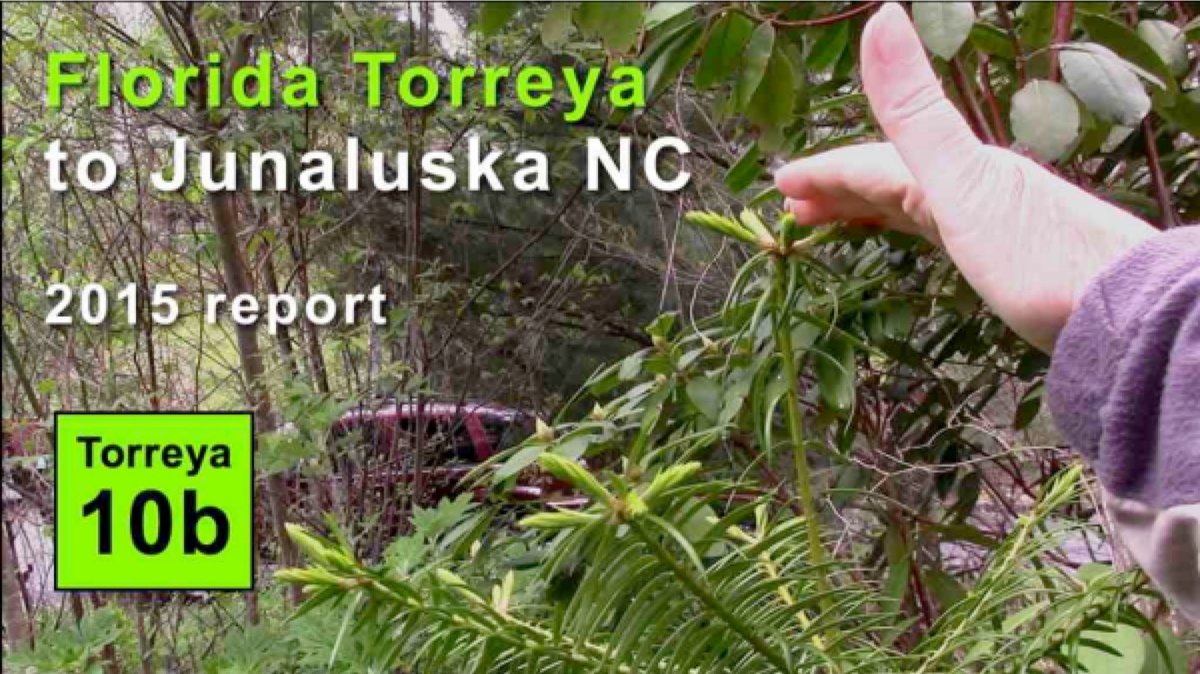|
Henry David Thoreau Tree
Lake Junaluska, North Carolina
(planted July 2008)
CORNEILLE BRYAN NATIVE GARDEN, Lake Junaluska.
NE-facing slope of a NW-to-SE ravine with perennial creek at the bottom (2,600 feet elevation). The uppermost canopy is almost entirely deciduous, thus affording a lot of sun for evergreen growth in early spring, late fall, and mild winters.
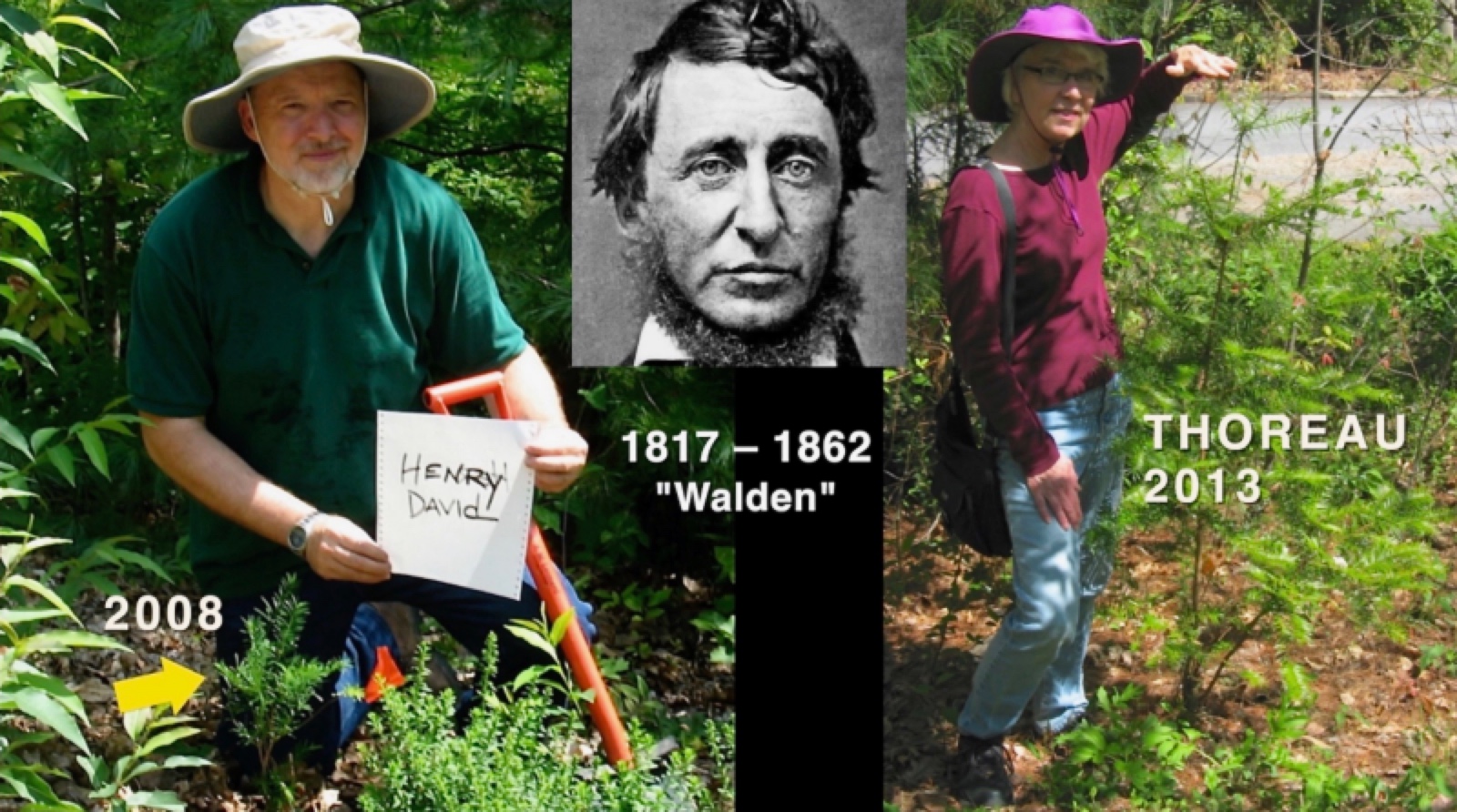 |
|
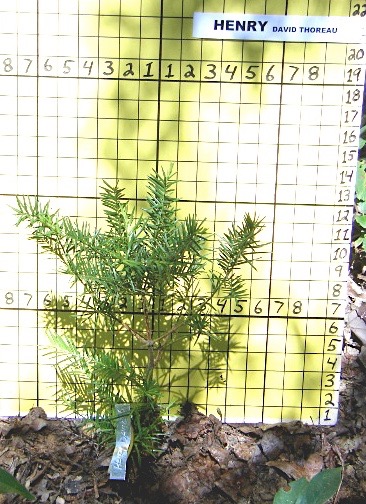
1 week after planting |
HENRY DAVID THOREAU is planted in July 2008 by Jack Johnston along an isolated northern chunk of the garden, surrounded by pavement. This is an unmarked part of Corneille Bryant Garden, used mostly for storage of tools, pots, and hoses and sometimes seedling starts. Sara Evans (above) shows how tall Henry has grown in just five years.
The view in the photo below shows the two plantings that are full-sun facing south.
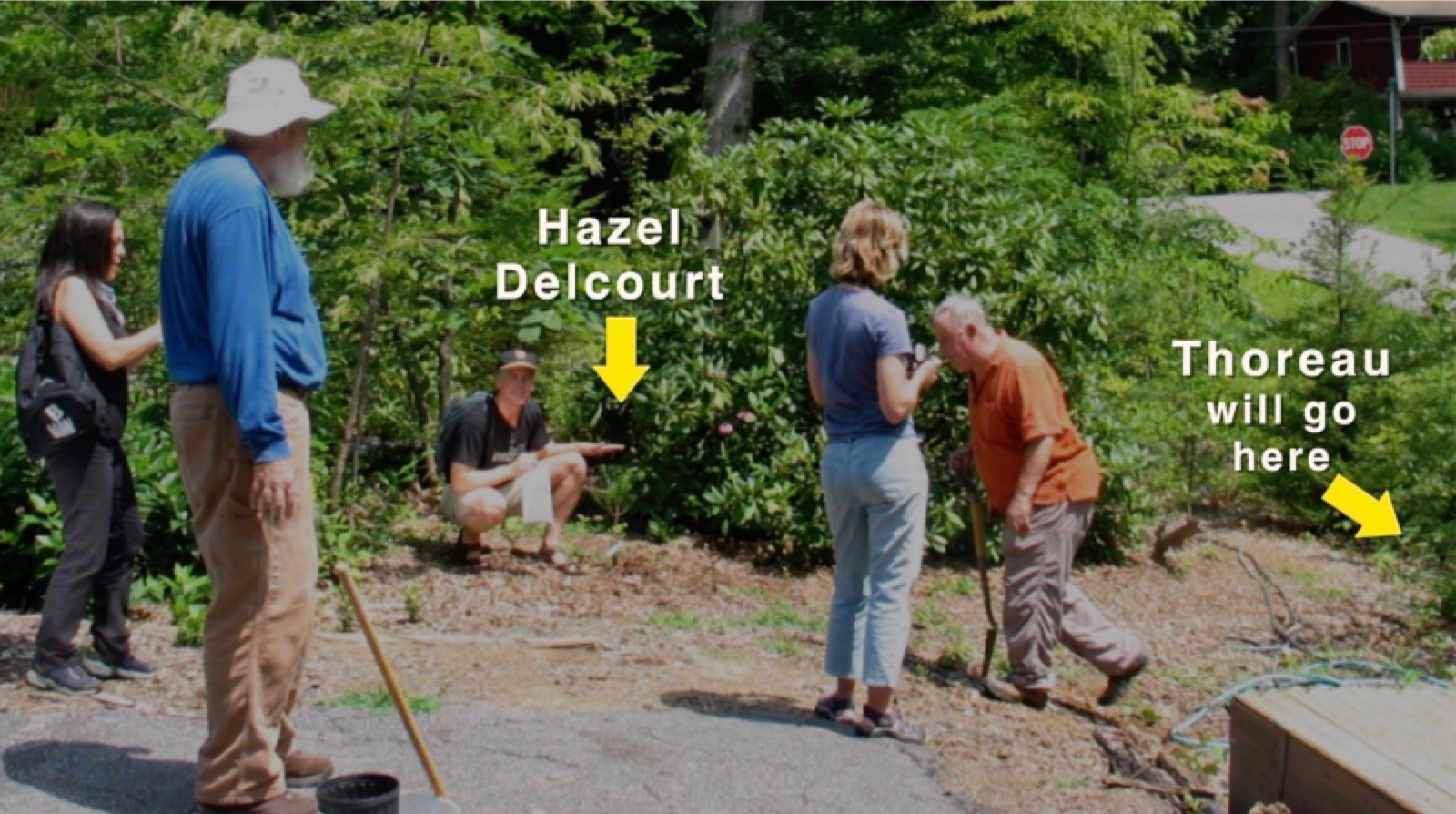 |
|
Sun on this south-facing side would have been intense in the early years, until the "jungle" grew up around them. (See photos taken in later years below.)
Ever since planting, the growth form of Henry (and also of Henry) has been upward and symmetrical, like a Christmas tree.
All the other potted seedlings in 2008 were planted beneath a full deciduous canopy of mature trees, inclining them to grow slowly and horizontally.
|
Advance to TENTH ANNIVERSARY 2018 LEARNINGS here.
CHRONOLOGICAL DOCUMENTATION
18 MAY 2012
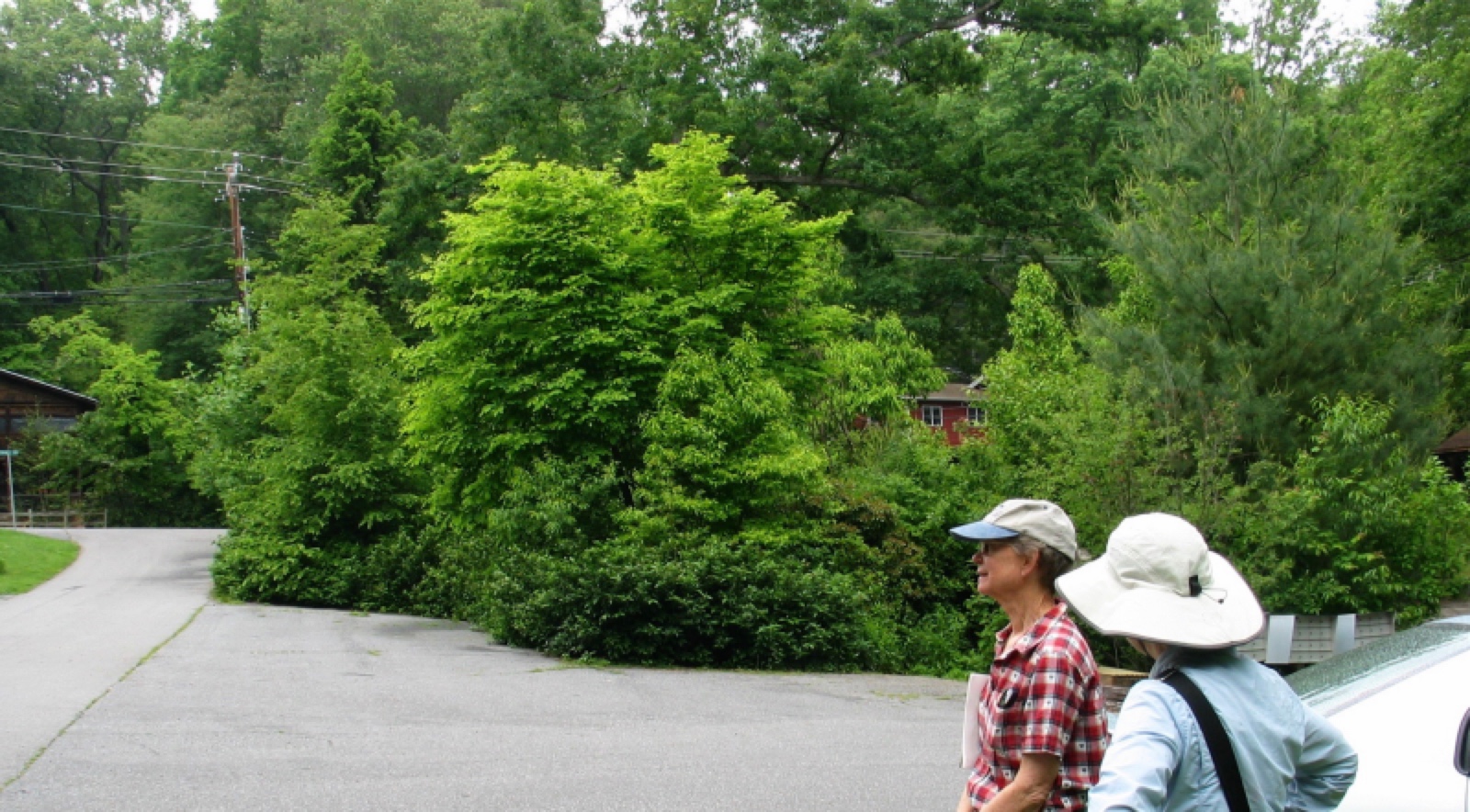 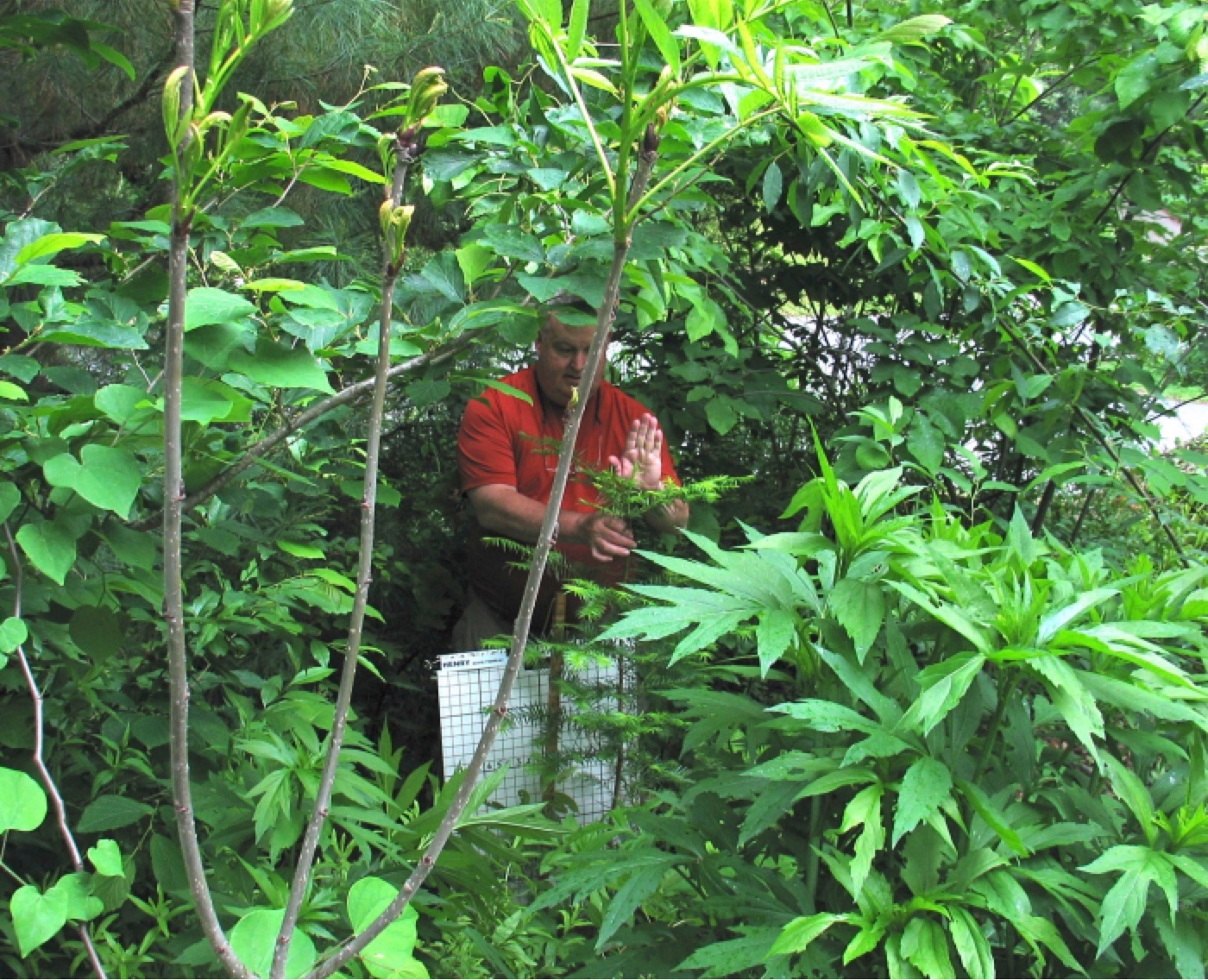
ABOVE LEFT (May 18, 2012): Both "Hazel Delcourt" and "Henry David Thoreau" specimens are increasingly immersed in a jungle of deciduous herbs and shrubs. Both are about a dozen feet inward of the pavement. The greenery has, in just four years, covered all the open brown soil visible in the 2008 photos above. The White Pine is shooting skyward, blocking the east.
ABOVE RIGHT (May 18, 2012): Lee Barnes uses the same grid he created in 2008 to easily show height and growth pattern of each of the 10 potted seedlings planted at Lake Junaluska and the 21 at the Waynesville site nearby. Lee is facing northeast, so this evergreen conifer would still get good sunlight for growth in late fall and early spring, despite the immense amount of herbaceous growth surrounding it. Notice the dull green foliage of the fast-growing white pine at the upper left corner.
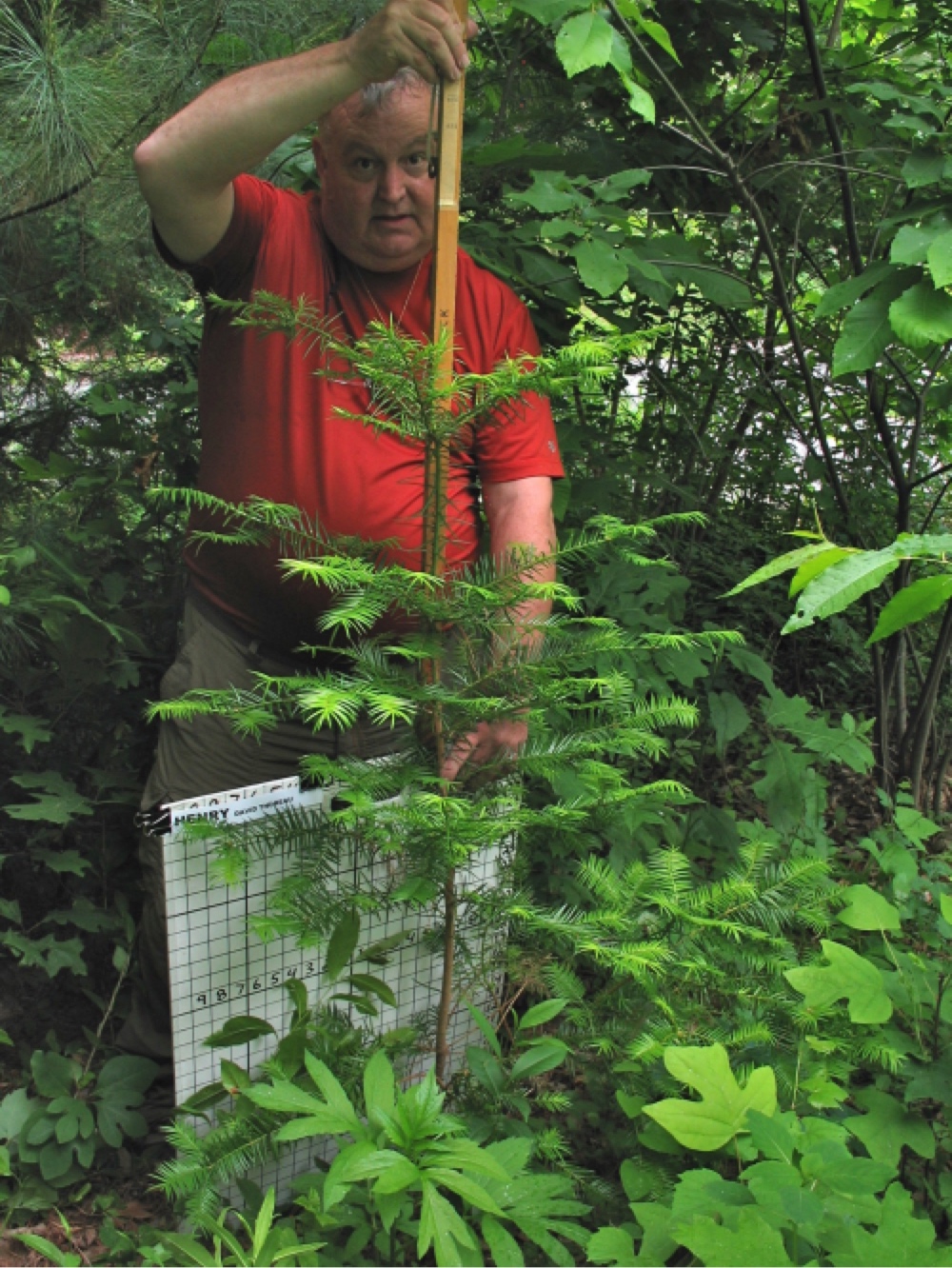
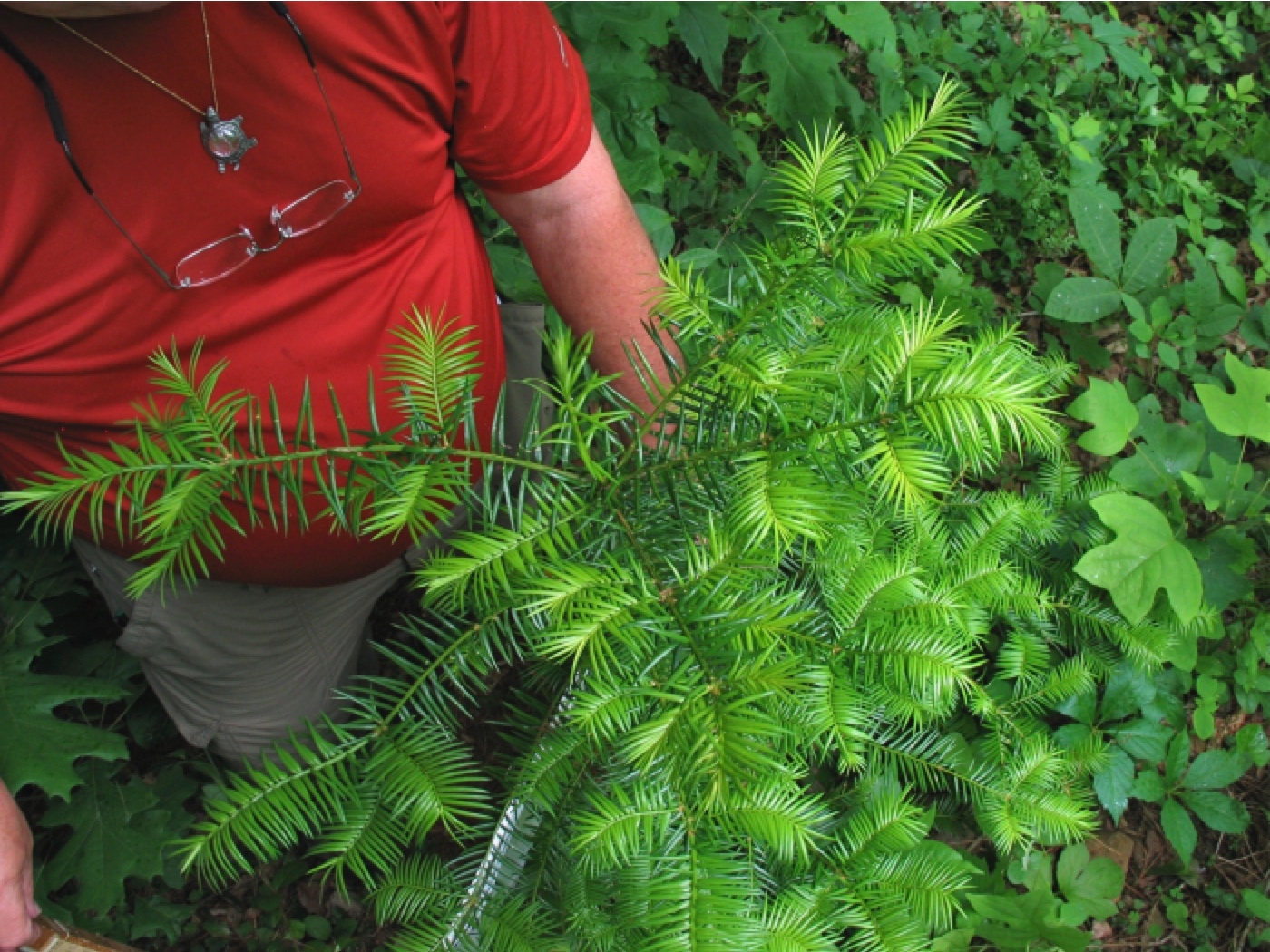
ABOVE: Among all 31 planted seedlings in 2008, HENRY is far ahead of the others just 4 years later.
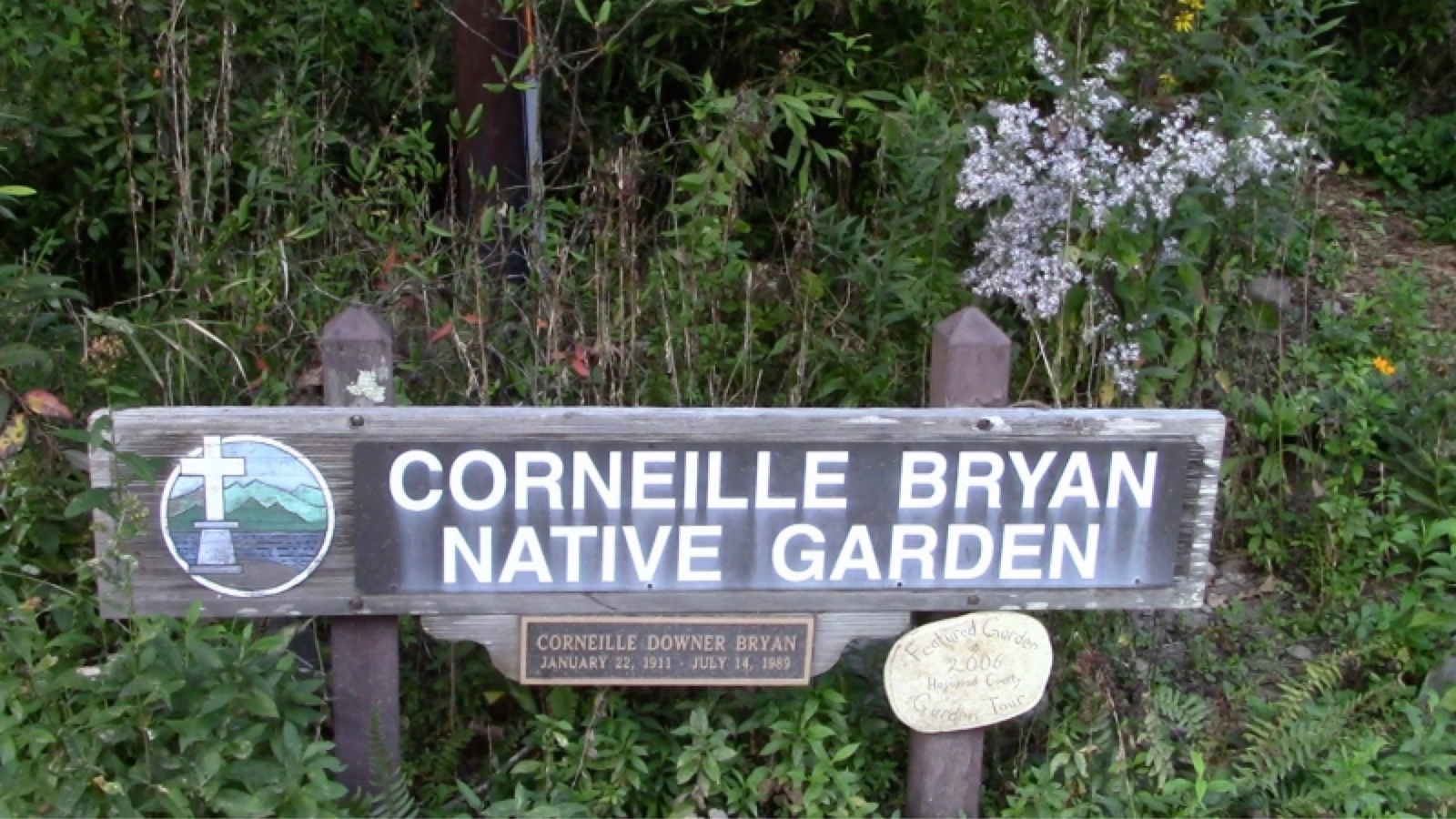
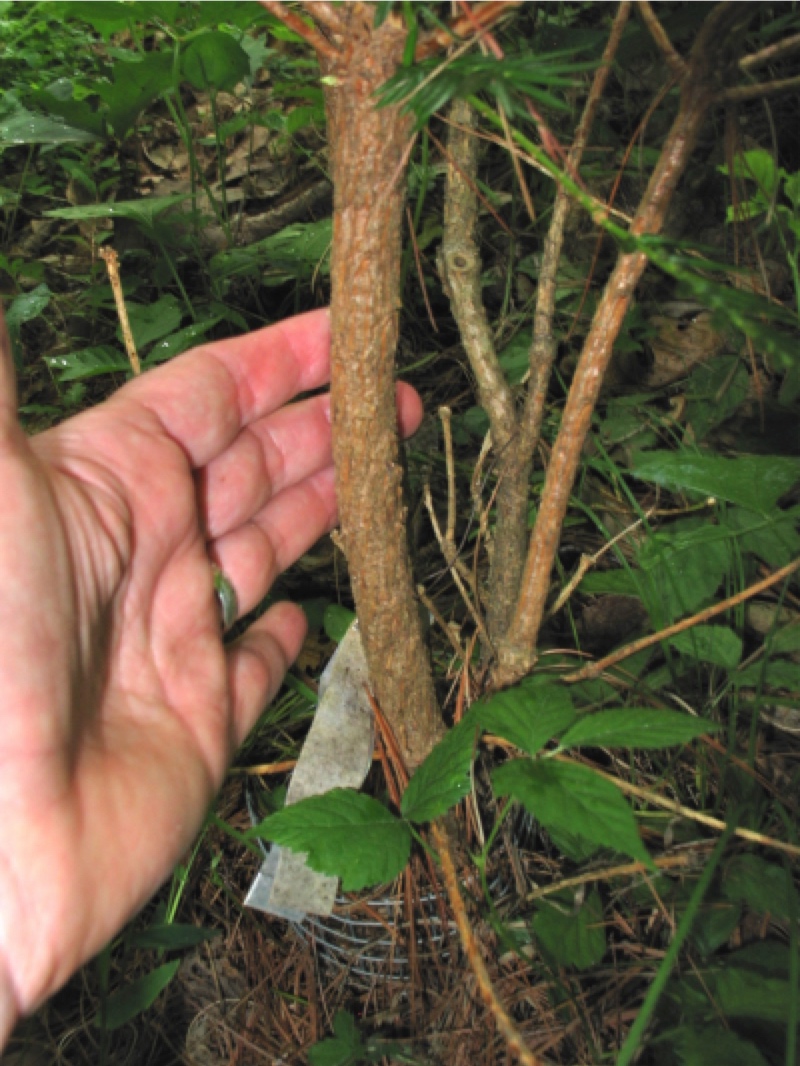
ABOVE RIGHT: The base of HENRY in 2012 has a single main stem and several small basals. Notice the wire cage against rodents.
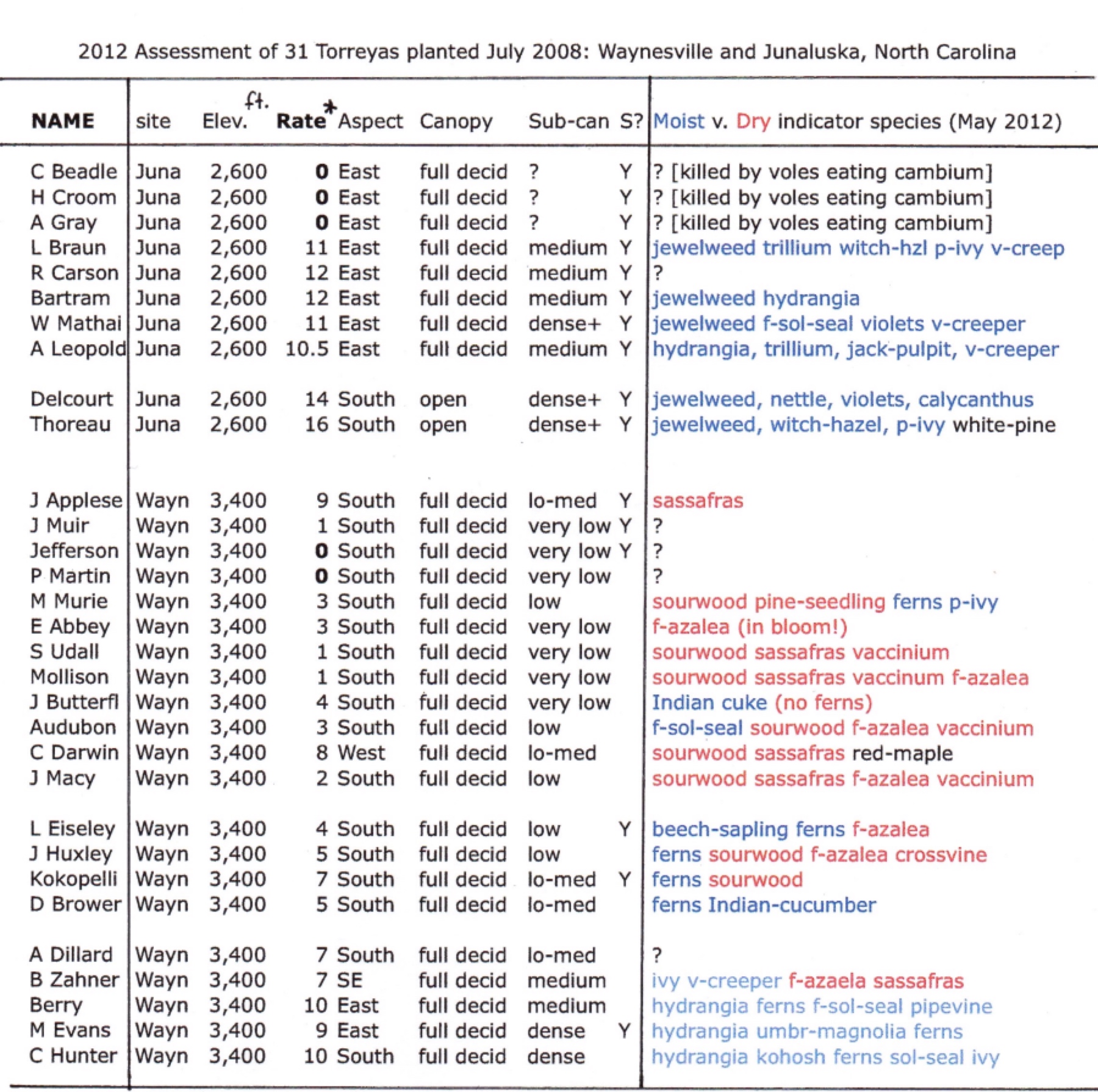
ABOVE CHART: In 2012, Lee Barnes accompanied Connie Barlow on an assessment of all of the 2008 plantings on both the Junaluska and Waynesville sites. Connie asked Lee to use his judgment in rating each of the trees. Because they visited the Waynesville site first, two trees tied there for the highest rating on a scale of 0 to 10 (Thomas Berry and Celia Hunter). When they visited Junaluska, however, the torreyas were so much more vibrant that the scale began at 10.5 and went up to 16 for HENRY DAVID THOREAU.
Note the color-coded "indicator species" of neighboring plants listed on the table. Red denotes dry-tolerant species; blue is moisture-loving. Connie sought Lee's help in identifying the nearby plants, as she was looking for a way to discern favorable v. unfavorable microsite conditions that would be easier (and likely more accurate and useful) than specifying soil type, slope, aspect, etc. Time will tell whether this list of plant associates offers insights to help with micrositing of future plantings in the southern Appalachians. Notice that because the Junaluska sites are all moisture-loving, only the Waynesville set will offer useful results. (Waynesville is 800 feet higher in elevation.)
23 APRIL 2013
Spring 2013 photos below taken April 23, but spring was delayed nearly 2 weeks, so it is more like April 10. Thus, instead of light-green new growth photographed above in spring 2012, there is only light-green leaf buds to indicate the vigor of the plant. Even in northern states, Michigan and Ohio, we are finding that Torreyas tend to produce two spurts of above-ground growth if healthy: the first in the spring and the second August through September. In western North Carolina Connie has seen instances of new growth still soft and underway in late October and early November — so in the southern Appalachians a warm autumn might bring forth a third growth spurt.
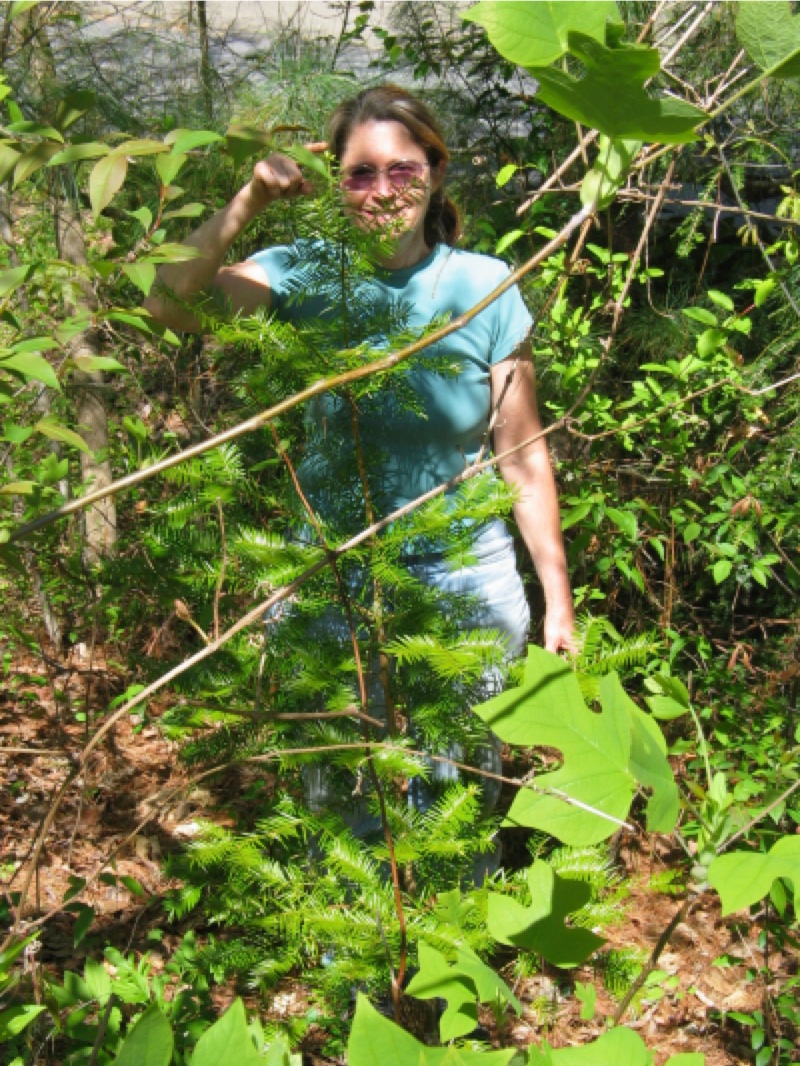
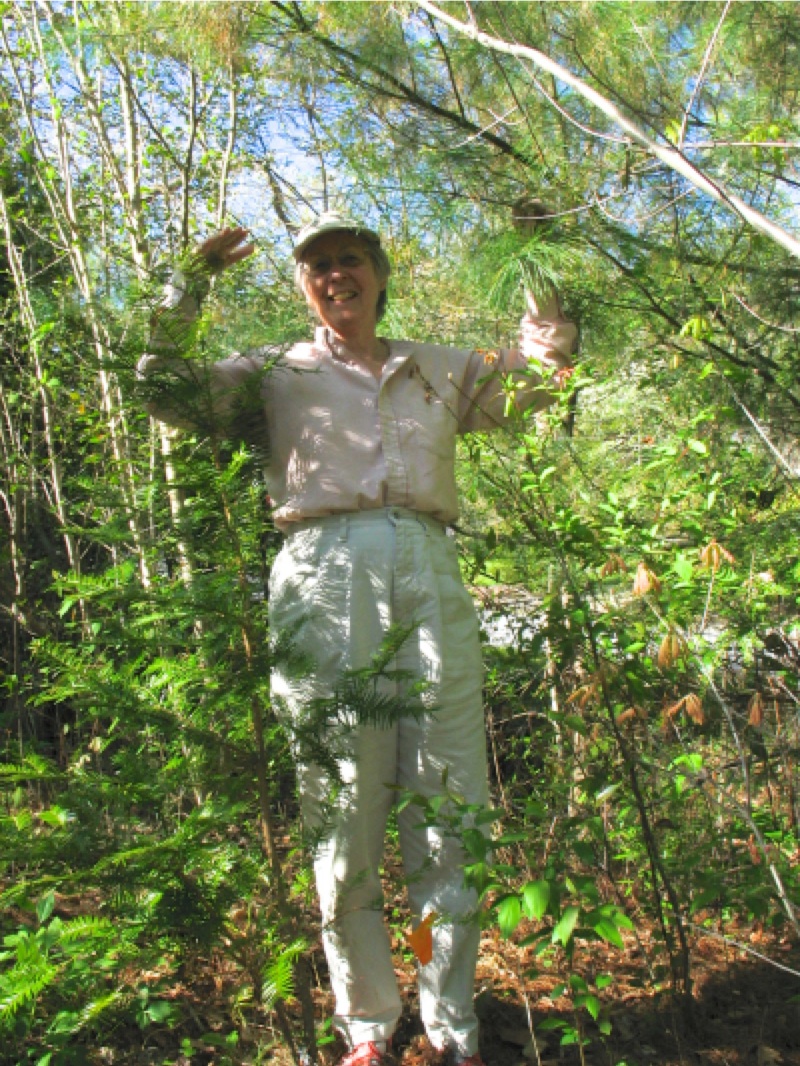
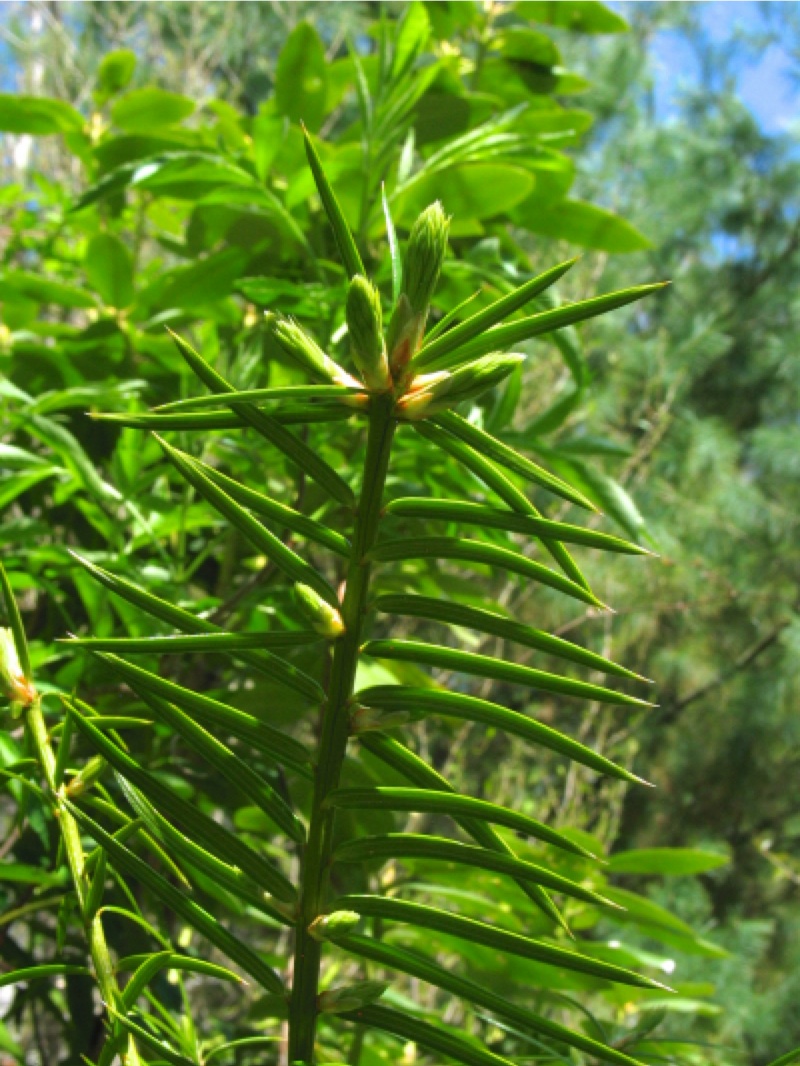
ABOVE LEFT (April 23, 2013): Janet Manning, chief gardener at Corneille Bryan Native Garden, stands behind the Henry David Thoreau plant. She reports that, with the exception of watering this specimen for several months after it was planted 31 July 2008 and installing wire cages to protect the stems from rodent damage the following spring, there has been no human intervention or assistance for this specimen. (She is facing west into the late afternoon sun).
ABOVE CENTER (April 23, 2013): Connie Barlow shows the height of HENRY and the short distance to a branch of the now-20-foot-tall White Pine toward the east (which partly shades Henry until late morning). Measurements of the central main stem growth beneath the top radial layer of lateral branches indicate that this tree grew 8.5 inches vertically in 2012 and the same amount in 2011.
ABOVE RIGHT (April 23, 2013): Close-up of the leaf buds for 2013 new growth topping the apical stem. Notice the apex shows that another single vertical stem will grow, surrounded by 5 lateral branchlets that will radiate out from that point.
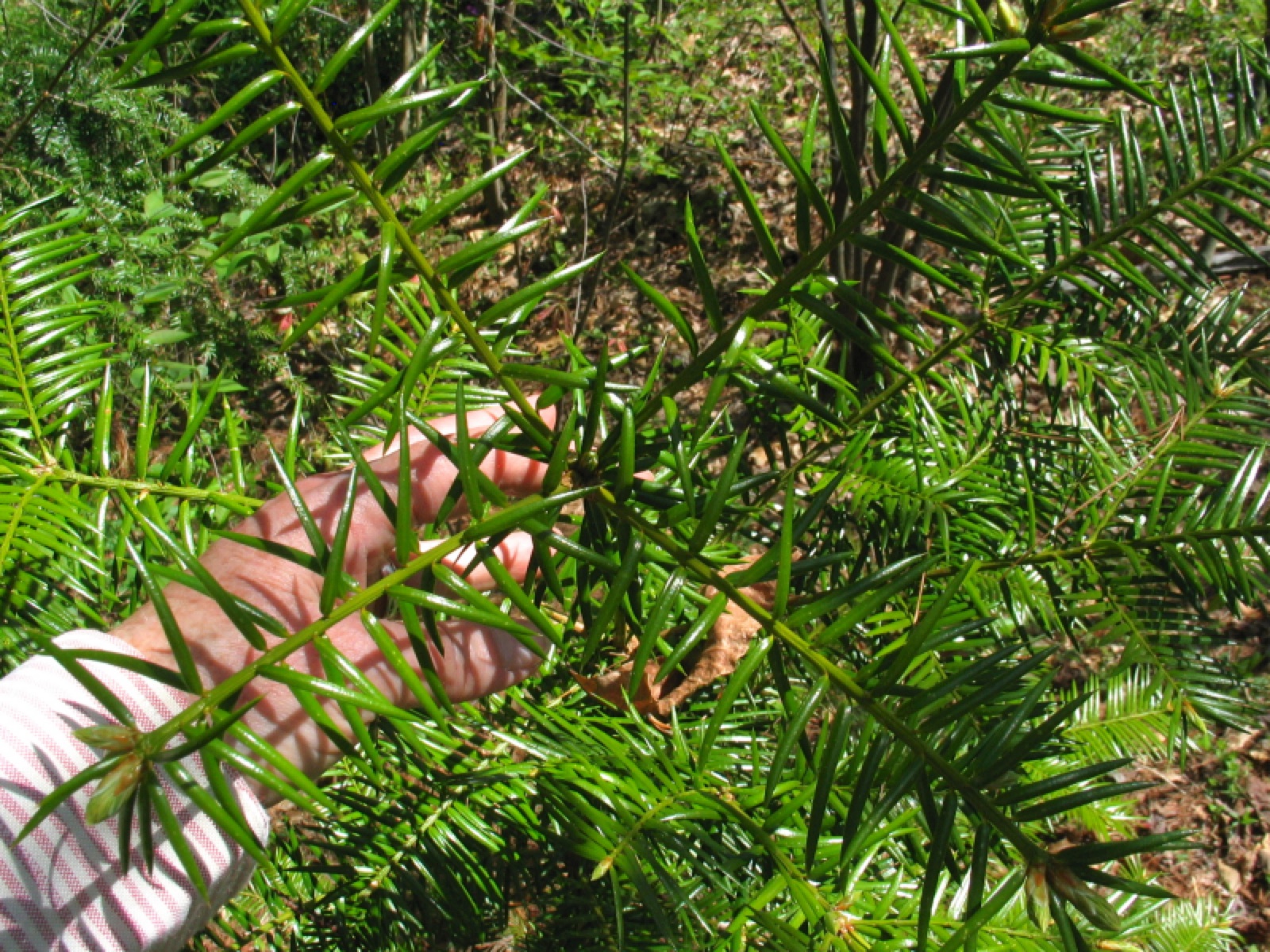
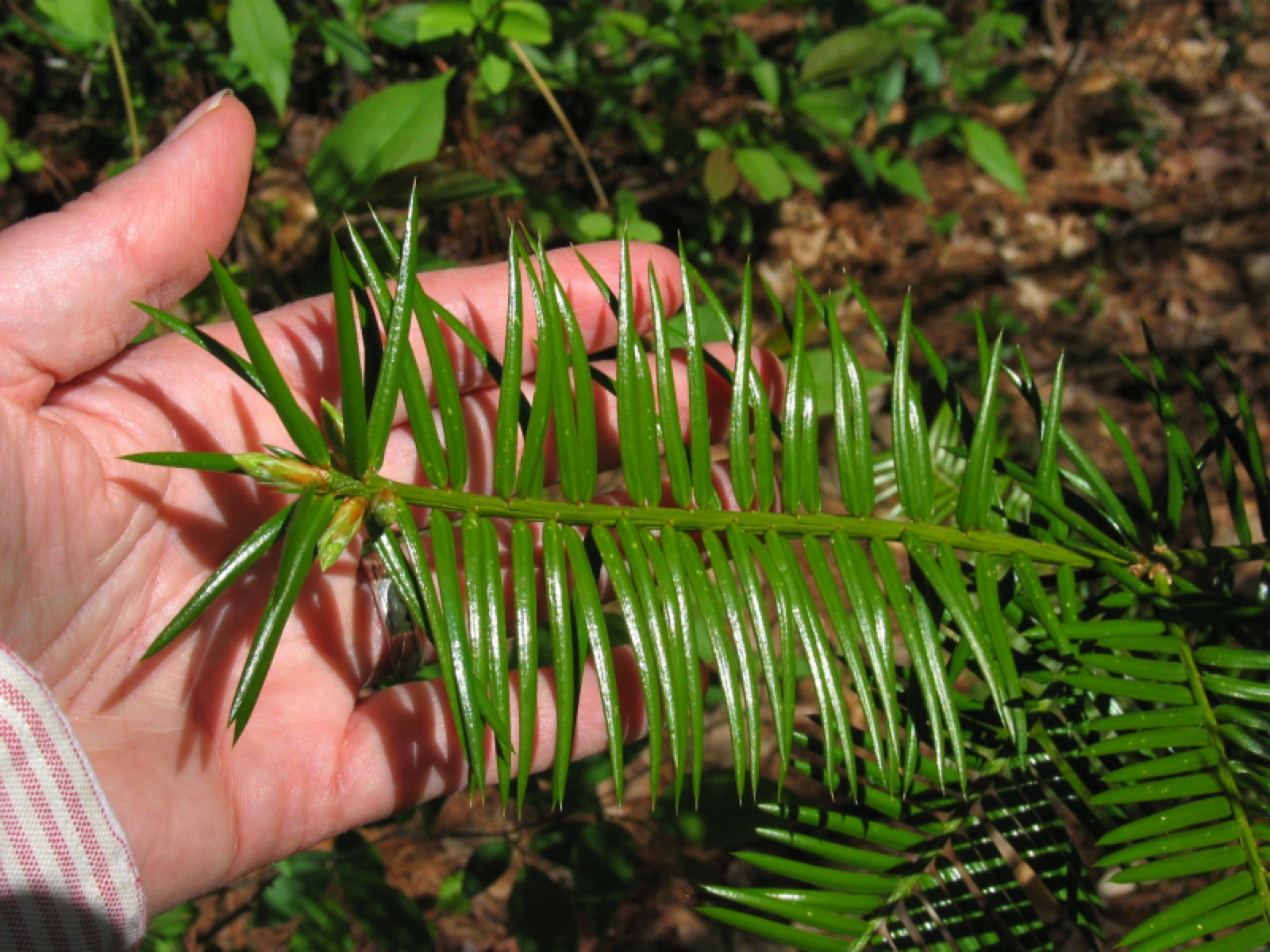
ABOVE (April 23, 2013): Connie Barlow (photographer) uses her left hand to highlight the vigorous growth of 2012 and the lack of weather damage to those exceptionally long needle-sharp leaflets.
BELOW:
NEW MEASURE OF HEALTH IN 2013: leaf bud count = 158 on the single main stem and 63 total on the three ancillary basal stems.
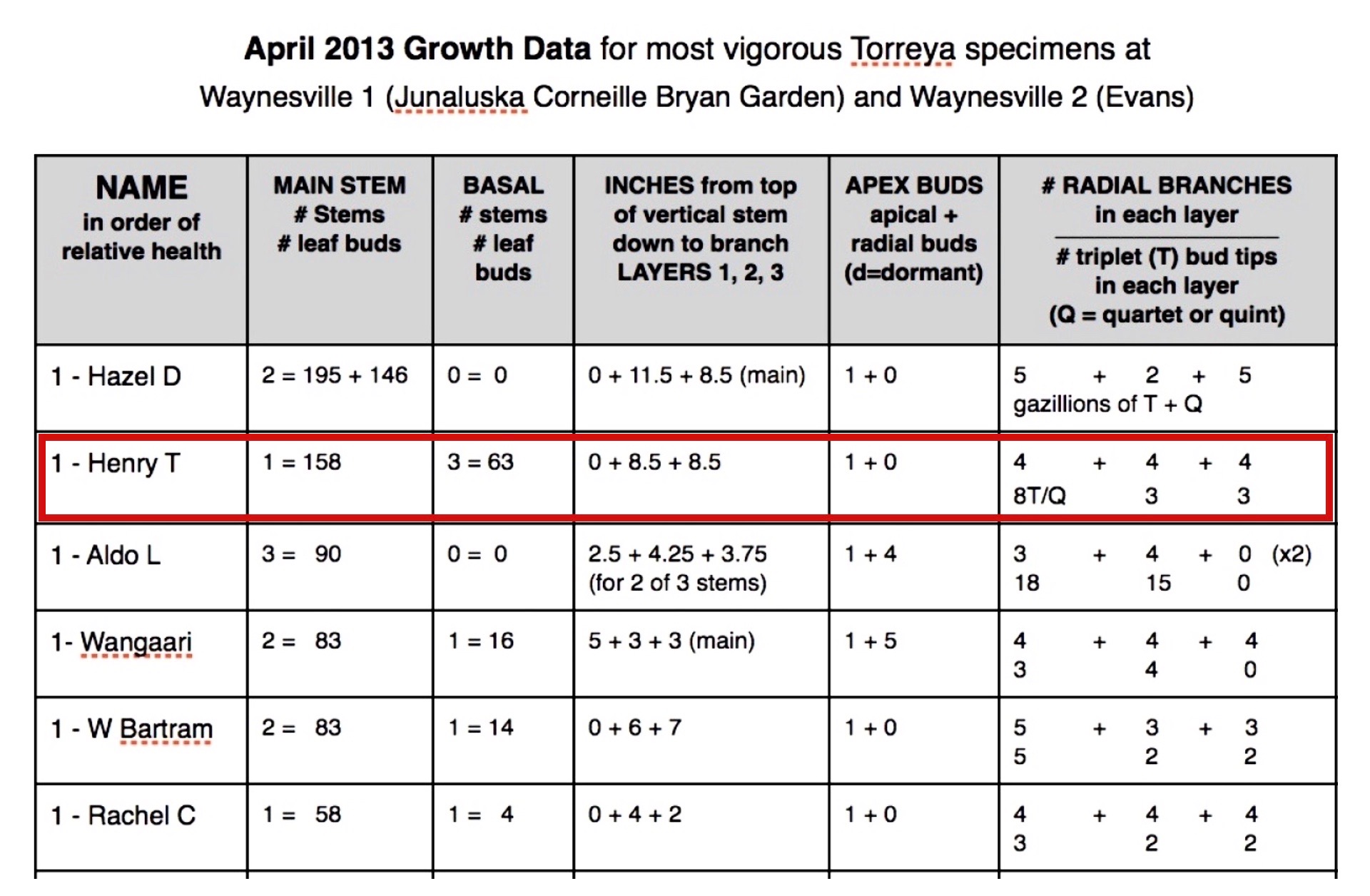
25 APRIL 2015
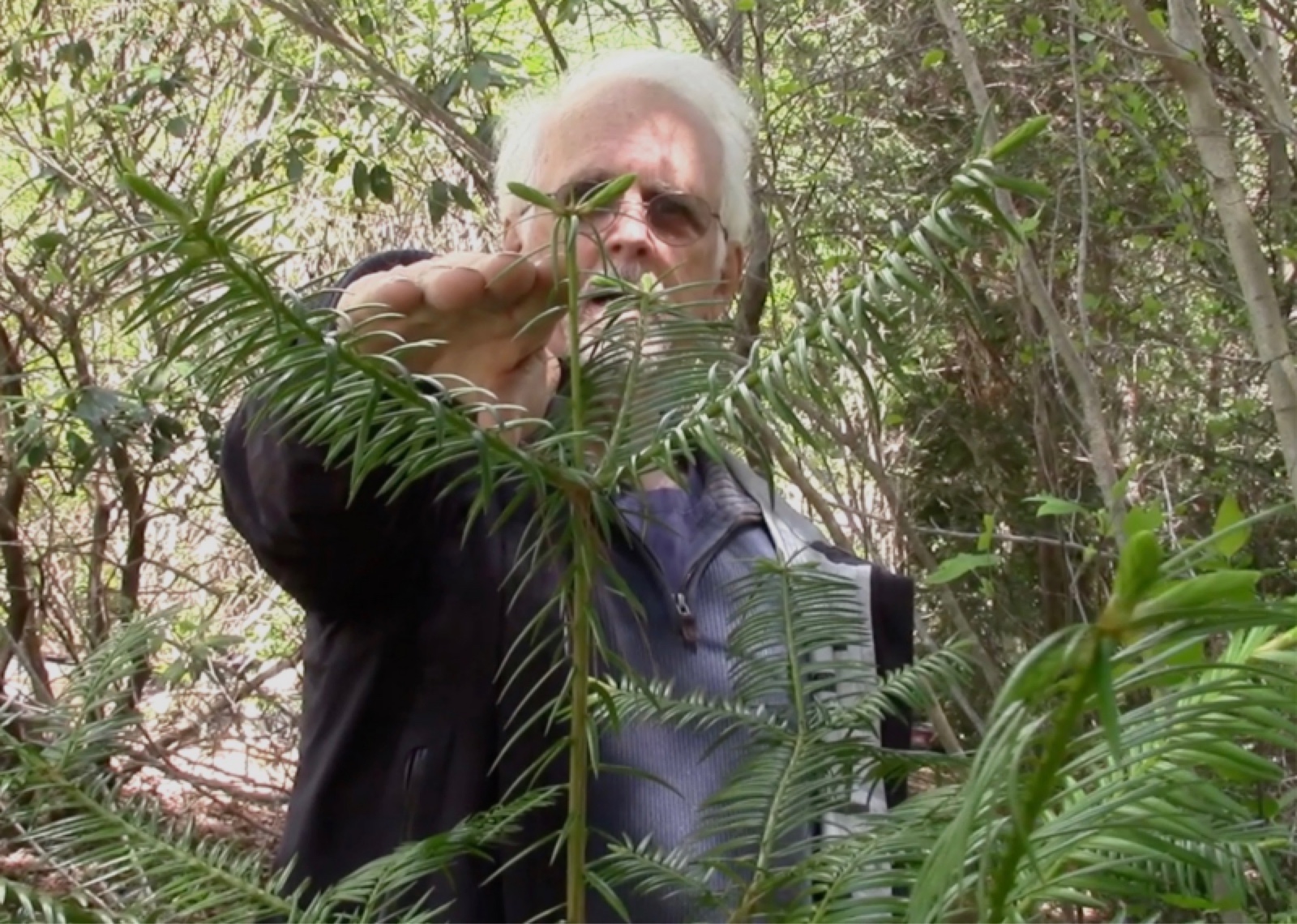
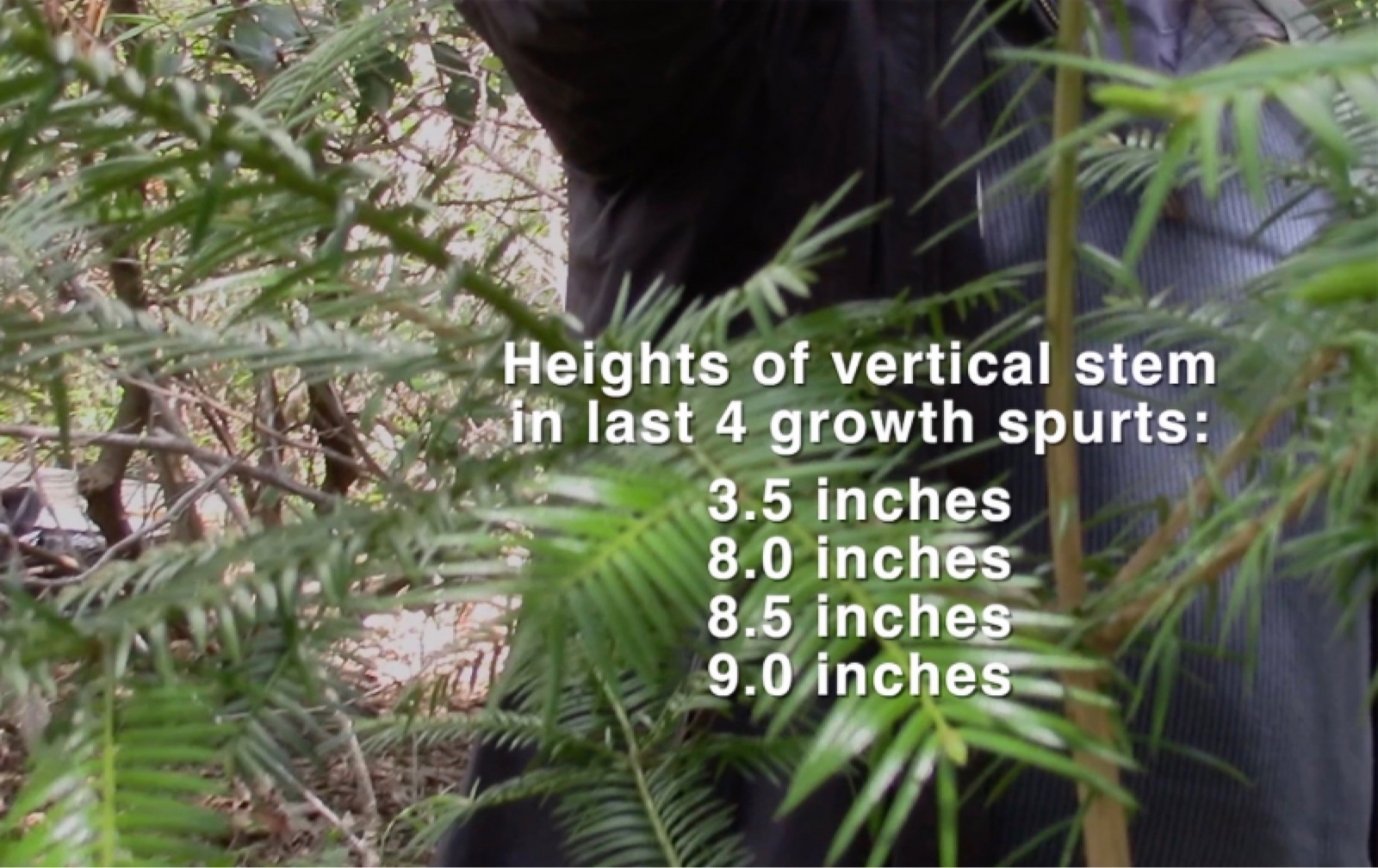
ABOVE (April 25, 2015): Jim Thomson shows the top of HENRY DAVID THOREAU. Thomson and Barlow together generated the measurements of previous vertical growth spurts of the vertical leader.
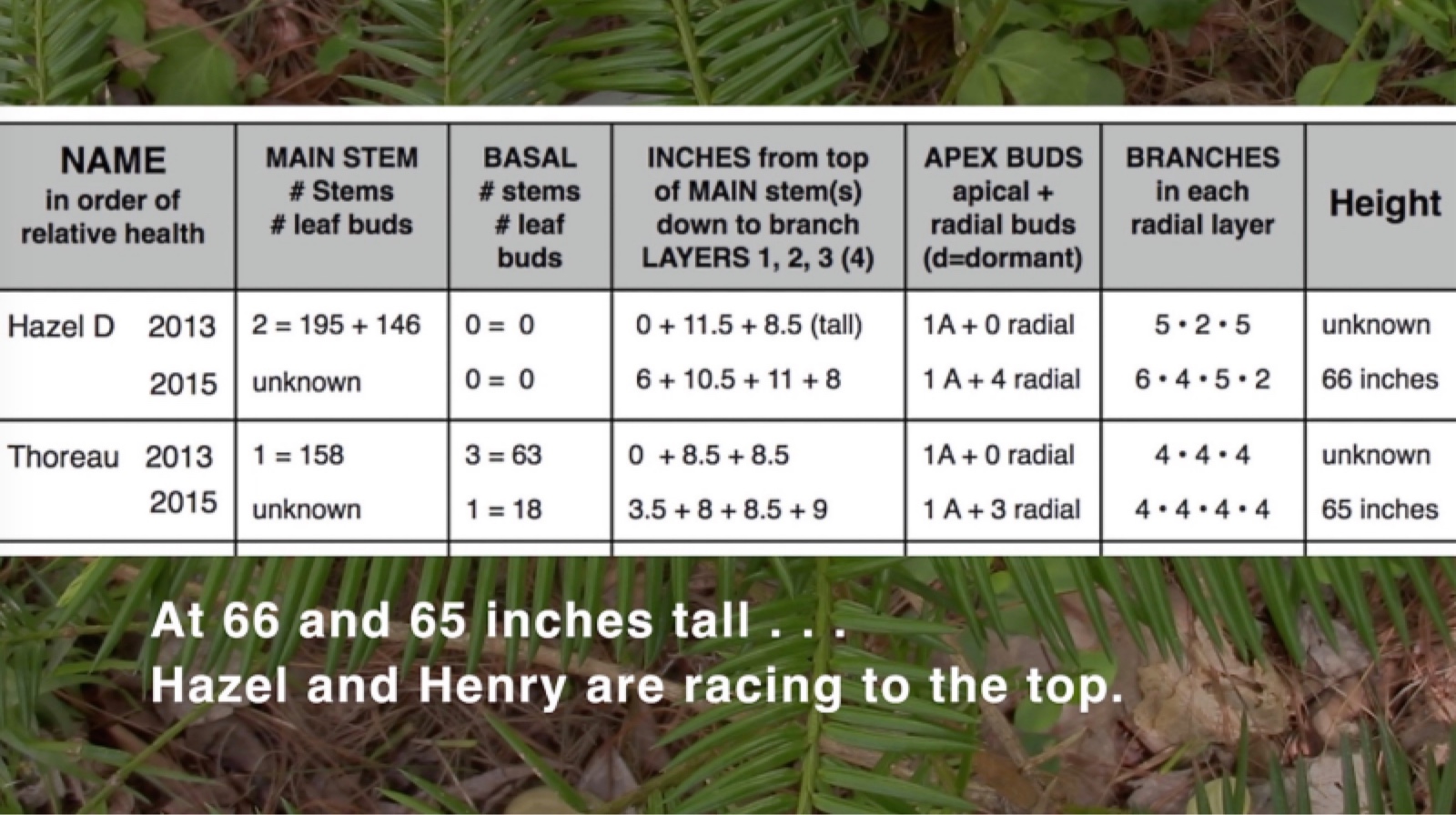
ABOVE (April 25, 2015): By 2015 there were just too many vegetative buds to accurately count. Rather, height became the dominant data point. At 65 inches, Henry's tallest stem was one inch shorter than Hazel's.
21 MAY 2016
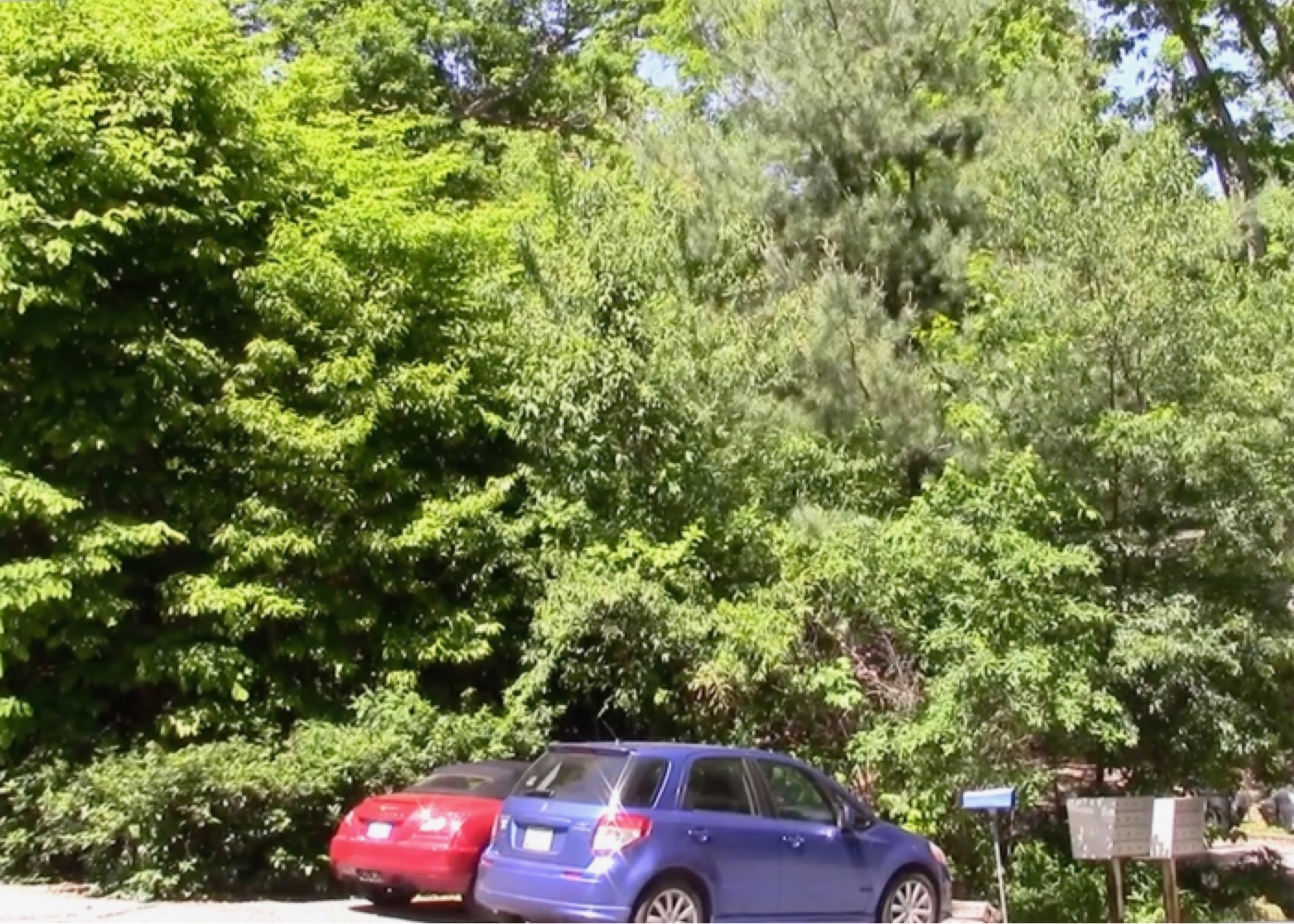
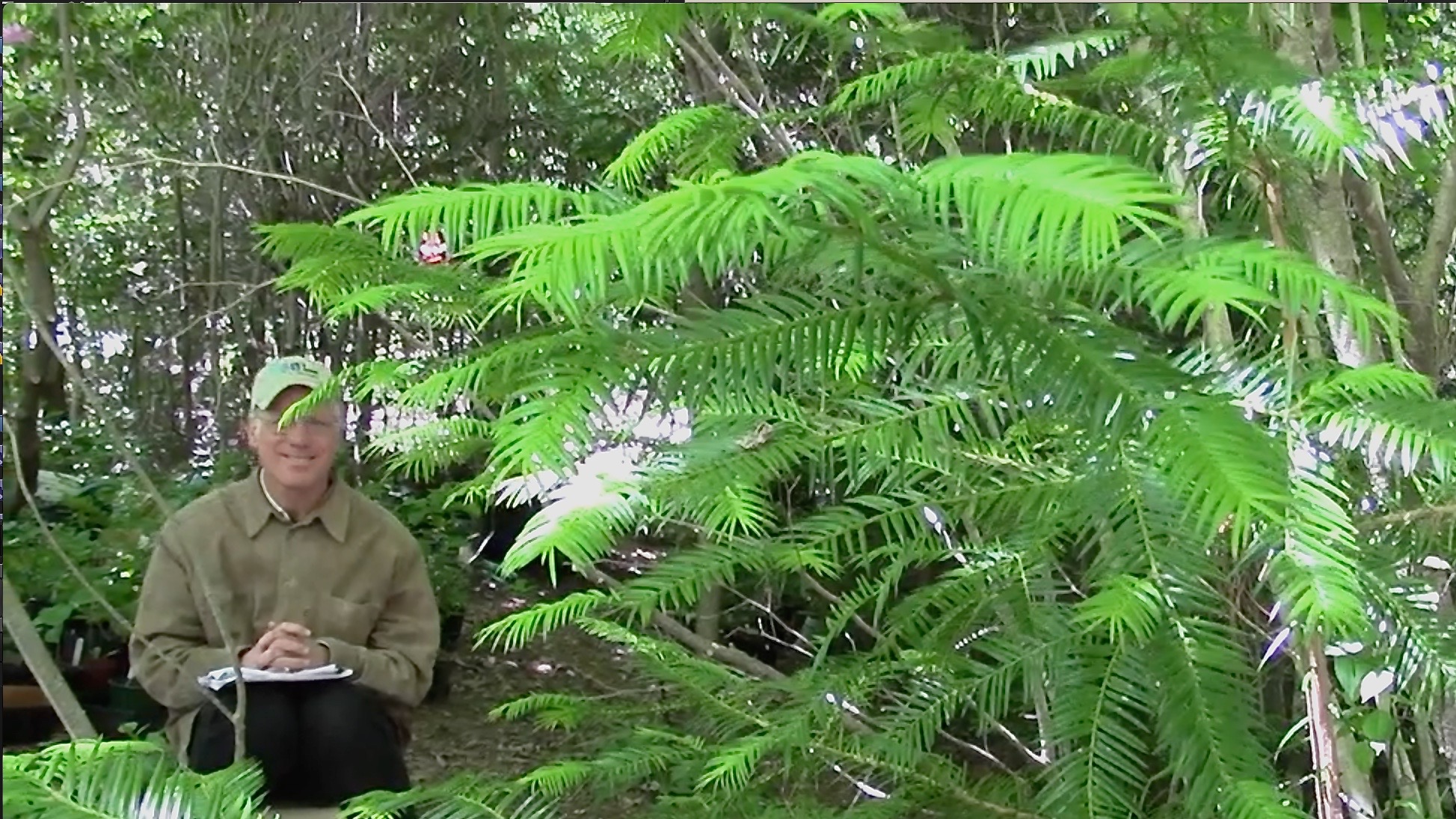
ABOVE LEFT (May 21, 2016): The south-facing side of the garden segment; Henry and Hazel are both about a dozen feet into the shrubbery.
ABOVE RIGHT (May 21, 2016): Michael Dowd takes notes as Connie Barlow (photographer) calls out measurements. Late May is an excellent time for filming. The lateral spring growth has already extended, but it is still soft and light green.
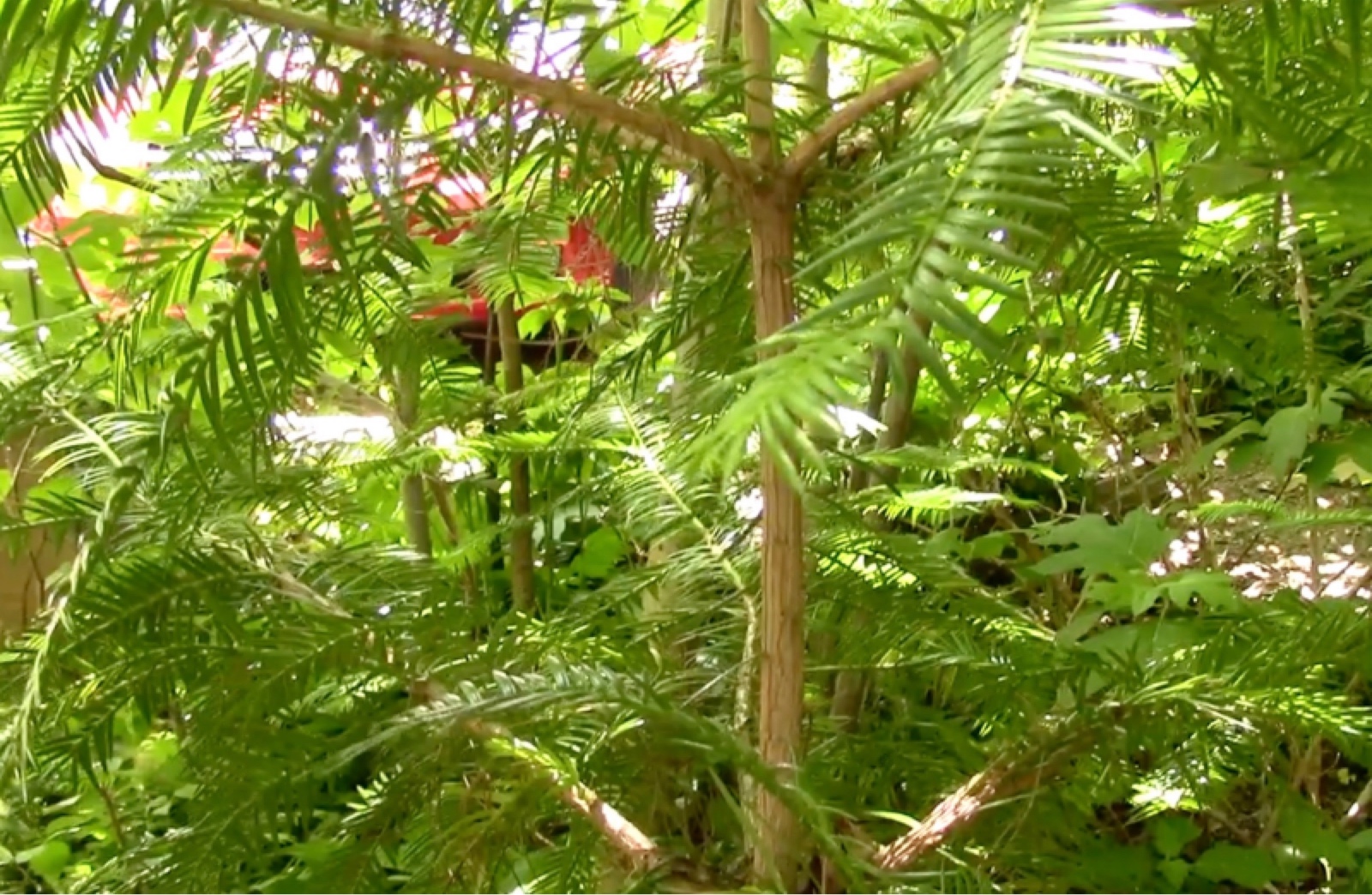
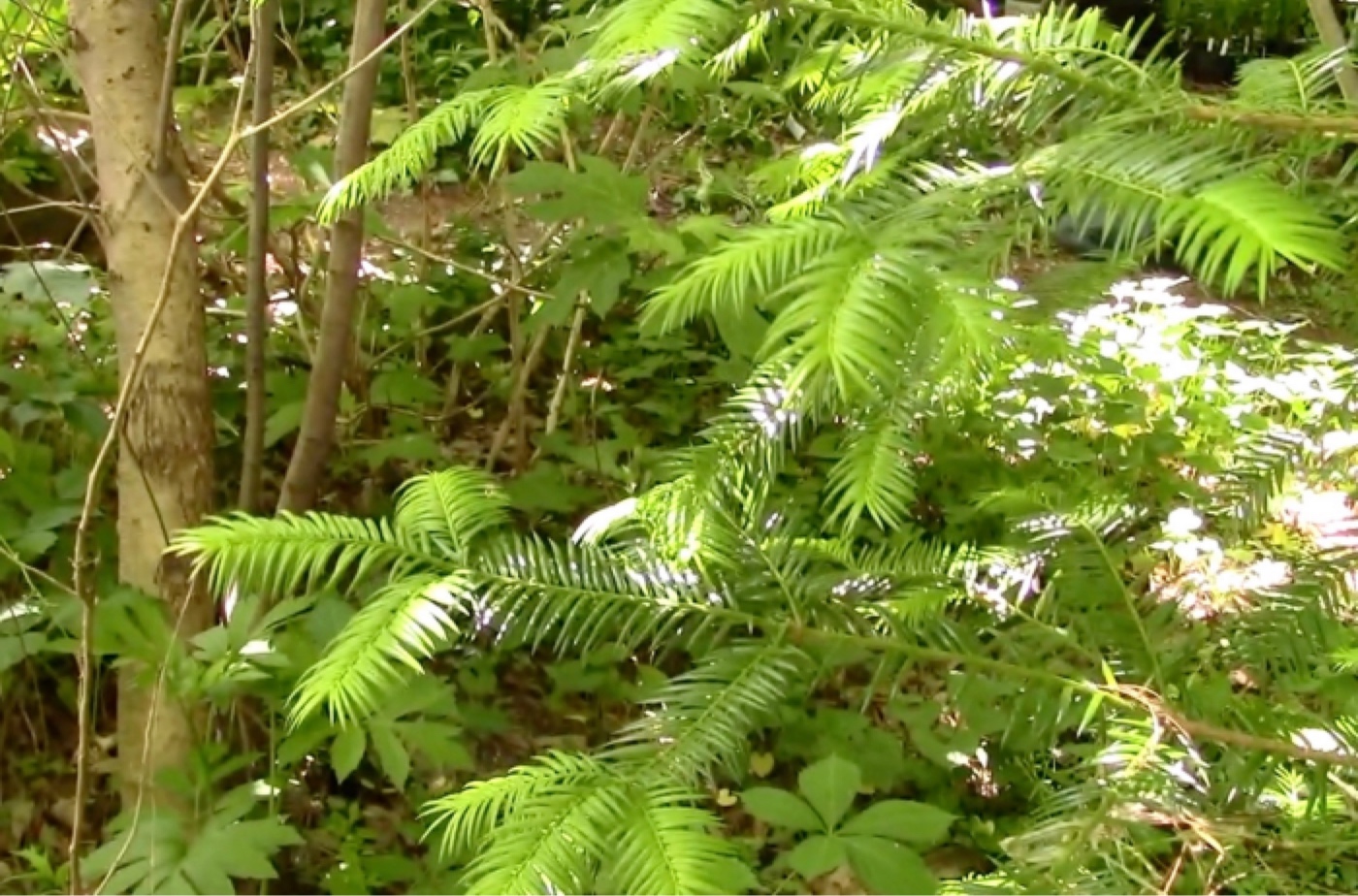
ABOVE LEFT (May 21, 2016): A mid-section of Henry shows symmetry and strong vertical growth.
ABOVE RIGHT (May 21, 2016): The sunny-side branch with the farthest reach stretches out only 2.5 feet (Hazel was close to 4). But excellent new growth is evidenced by the number of light-green "triplets" at the tips.
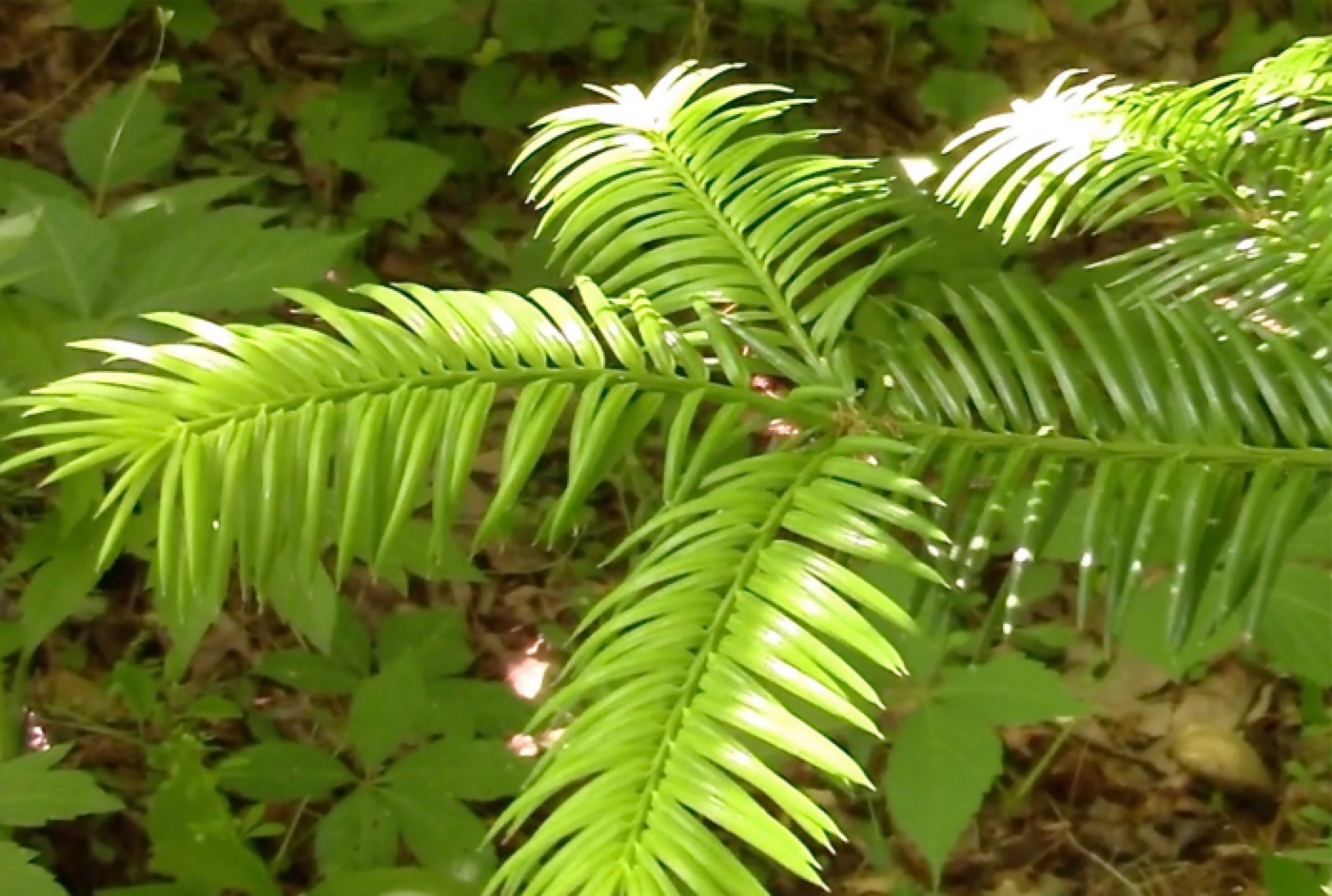
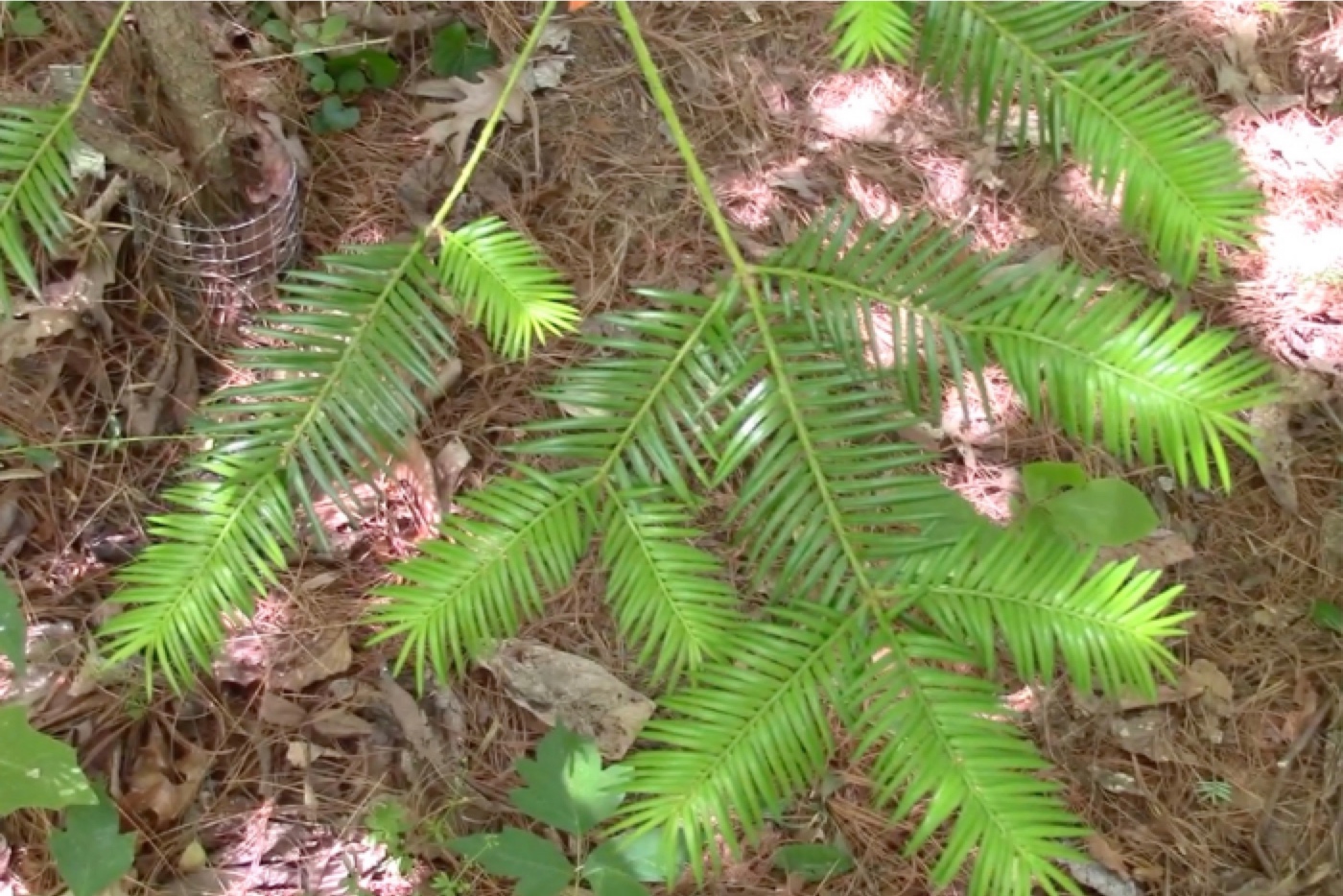
ABOVE LEFT (May 21, 2016): The beauty of the triplet growth at the tip of the longest branch.
ABOVE RIGHT (May 21, 2016): Even this low branch on the sunny-side keeps putting forth new growth. (A wire cage is visible upper left — still protecting ground-level bark.)
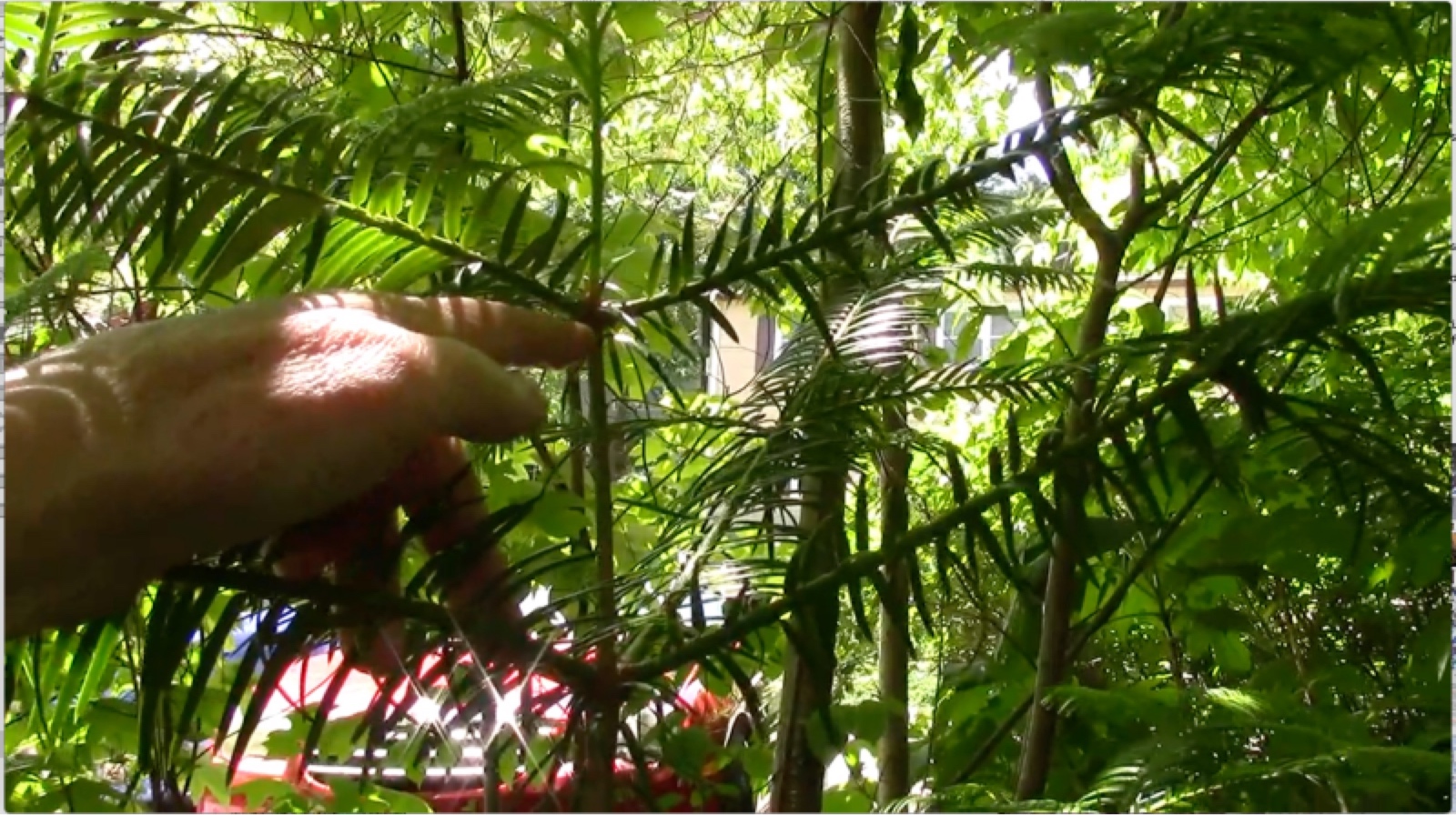
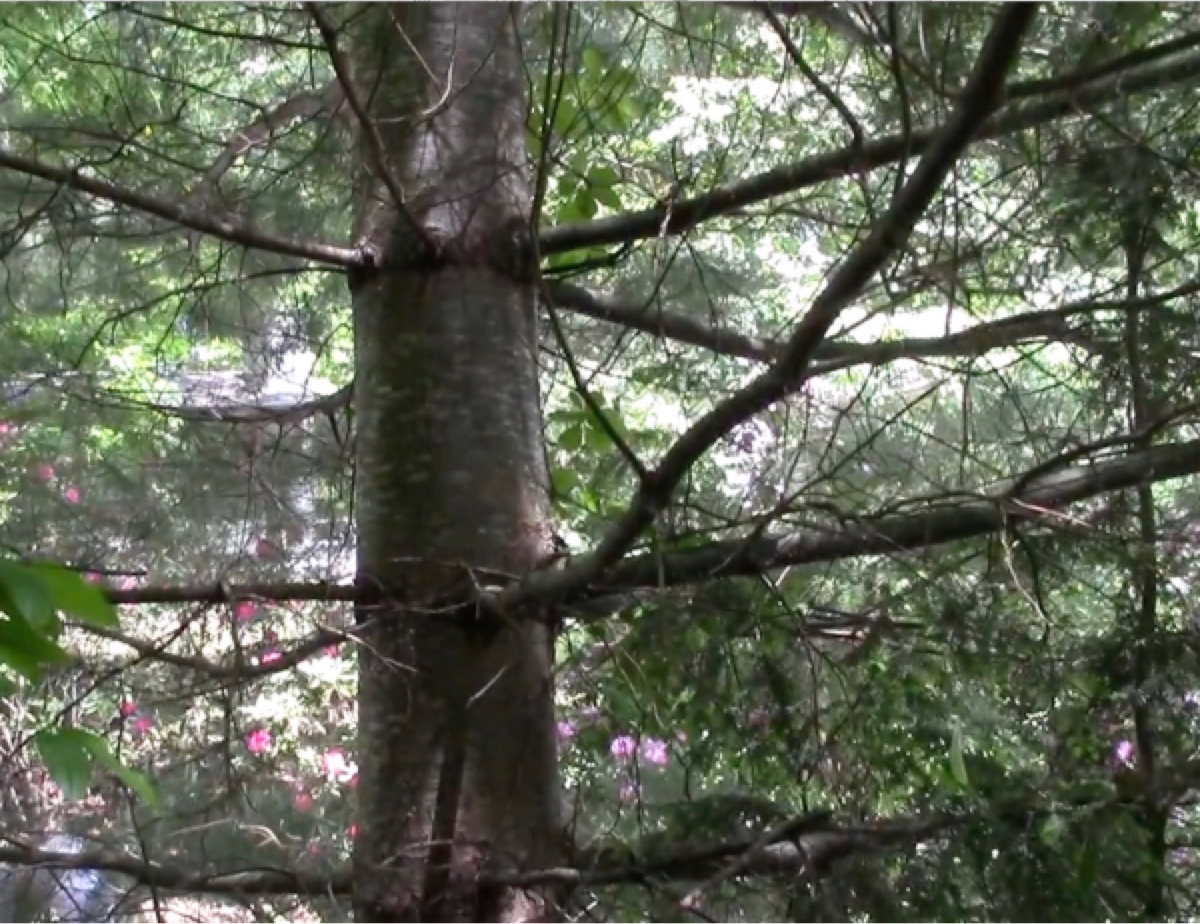
ABOVE LEFT (May 21, 2016): Connie points to the highest whorl of lateral branches. Rising above is the light-green new growth of the leader, which has not yet reached its full height this growing season.
ABOVE RIGHT (May 21, 2016): The White Pine that shades Henry on the east is now very tall, but its delicate needles are whispy enough to let dappled sunlight through. The Torreya grove planted at Biltmore Gardens near Asheville NC was healthy beneath an overstory of White Pine. When autumn 2004 hurricanes destroyed the pines (and several of the original 1939 torreyas), the remaining leaves suffered sun-scald, but new growth was UV-resistant. Gardening staff chose to replant with White Pines. So more study is needed of Torreya growth beneath native evergreen or native deciduous canopy trees — especially since the California Torreya has no opportunity for anything other than evergreen conifer overstory.
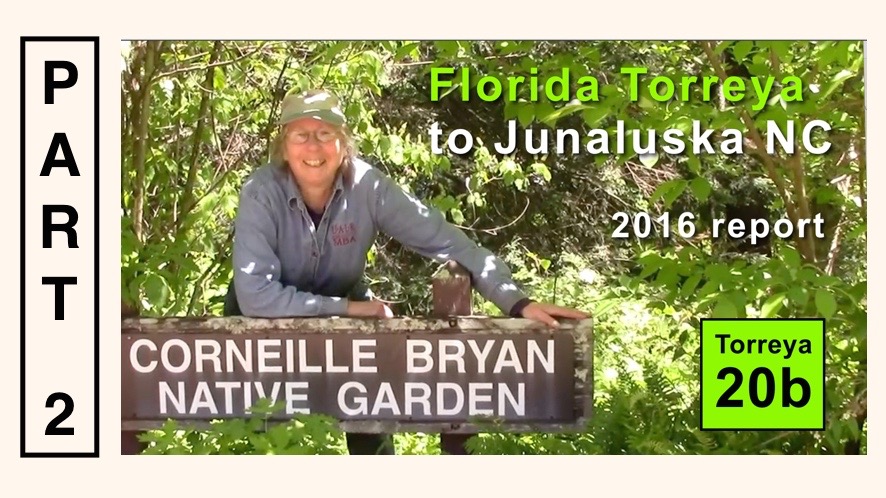 |
|
VIDEO 20b: Two biggest Florida Torreya trees still thriving at Junaluska NC in 2016
Both trees planted in full sun (as potted seedlings) in the upper end of Corneille Bryan Garden in 2008 are continuing to excel — despite now being patchily shaded seasonally by deciduous border and both increasingly by a White Pine to the east. A key finding is that neither specimen produced vertical apical growth in 2015, but both are doing so in 2016. HENRY is from timecode 11:19 through 19:38. |
7 OCTOBER 2018
Ten years after taking up residence in Corneille Bryan Native Garden, HENRY is still a classic conifer shape, with yew-like leaf orientations to maximize sunlight capture.
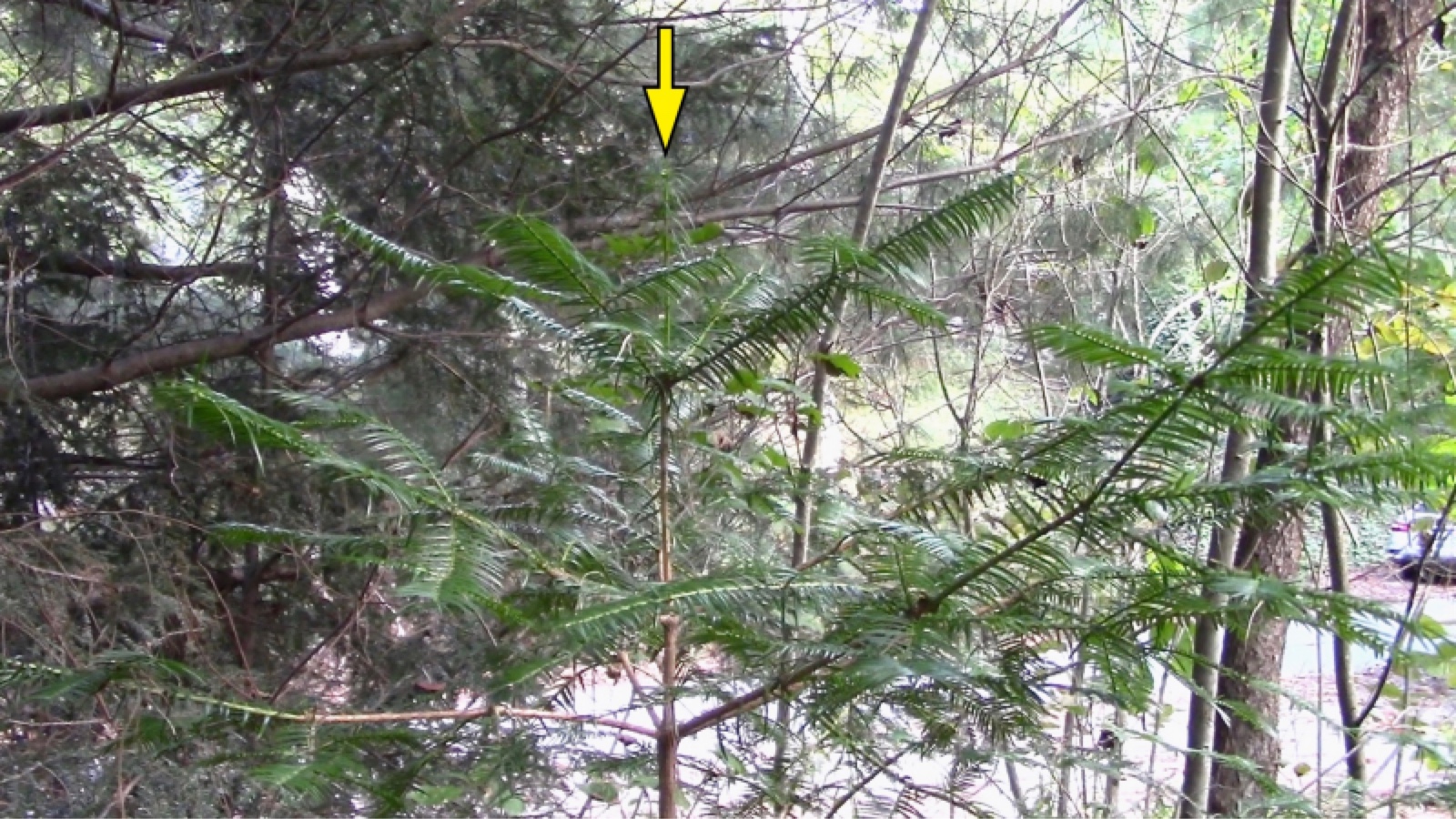
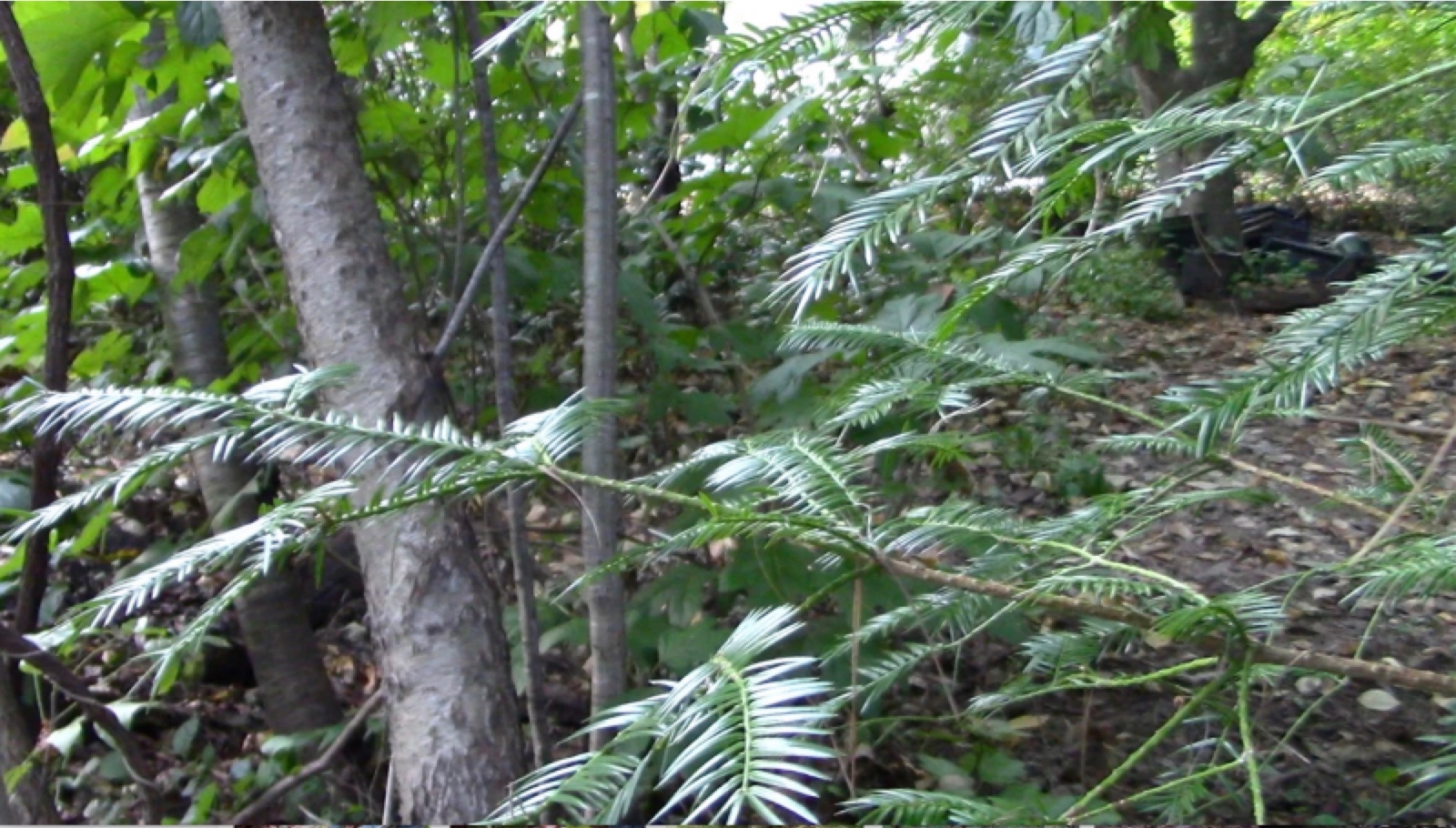
ABOVE LEFT (October 7, 2018): Facing east, we see the White Pine and the paved road beyond Torreya, which now is about 80 inches tall.
ABOVE RIGHT (October 7, 2018): Yewlike orientation of its glossy leaves are for subcanopy light capture. Leaves are outfitted to keep photosynthetically functional for about 7 years.
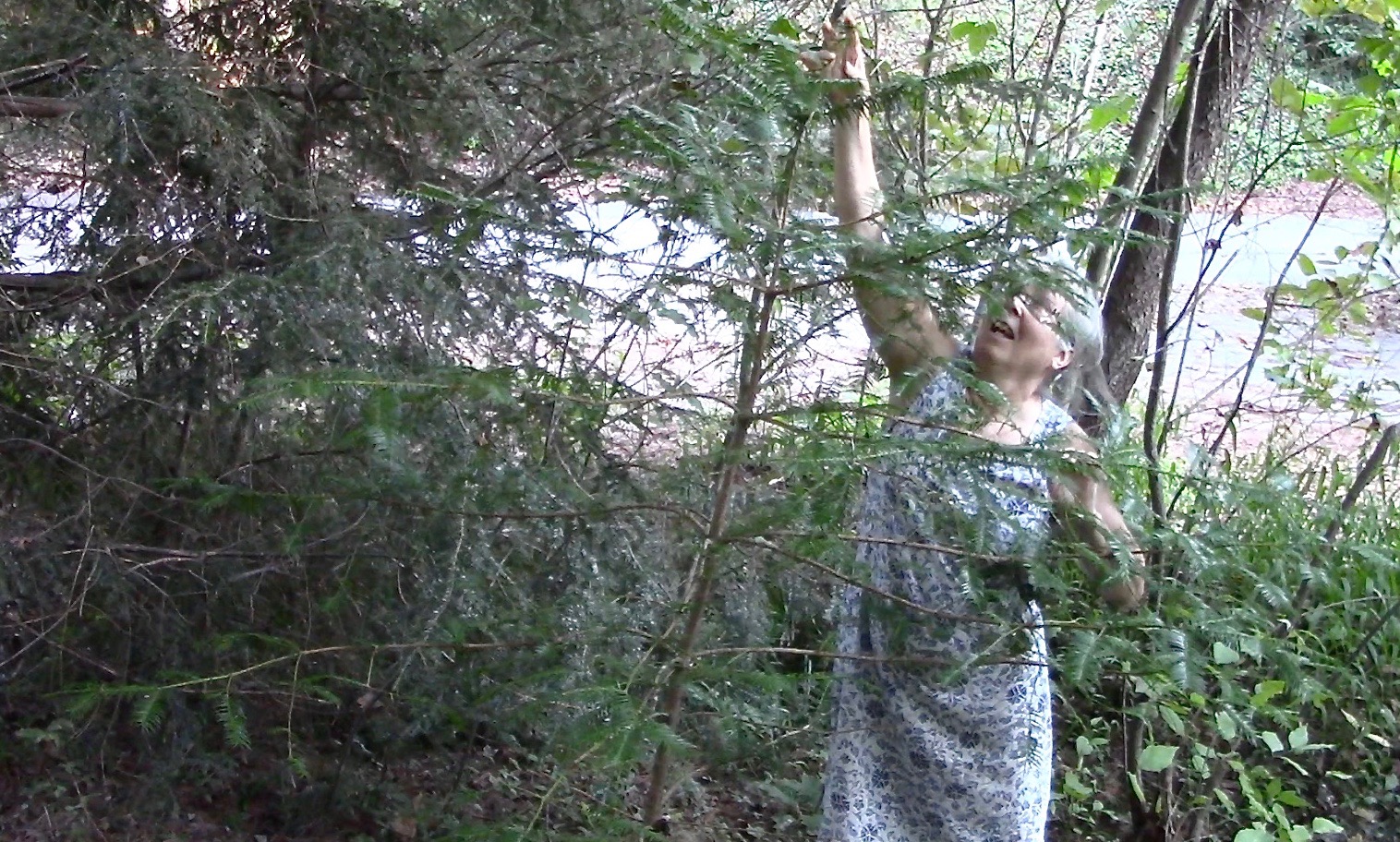
ABOVE (October 7, 2018): Connie Barlow cannot reach the top of HENRY. The White Pine is deepening shade on the left. Look carefully to see Henry's branches extending all the way from the bottom left corner to the lower right side of the image.
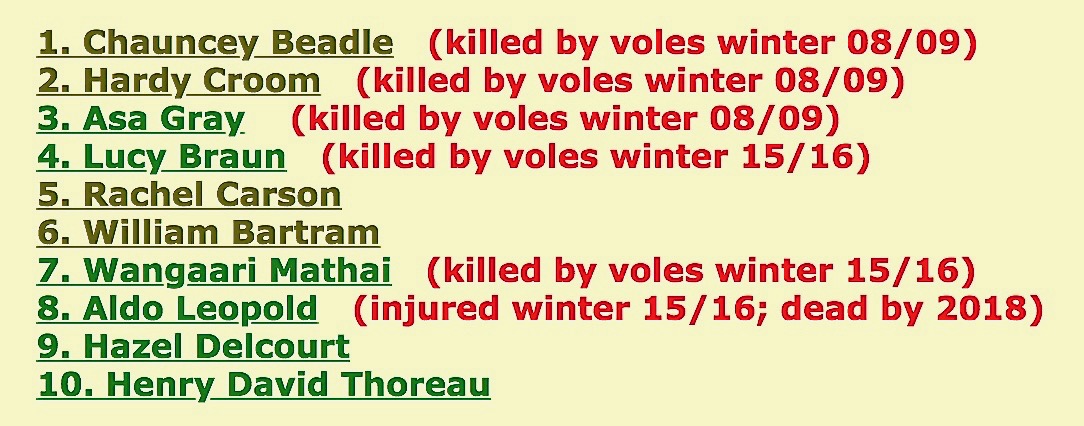
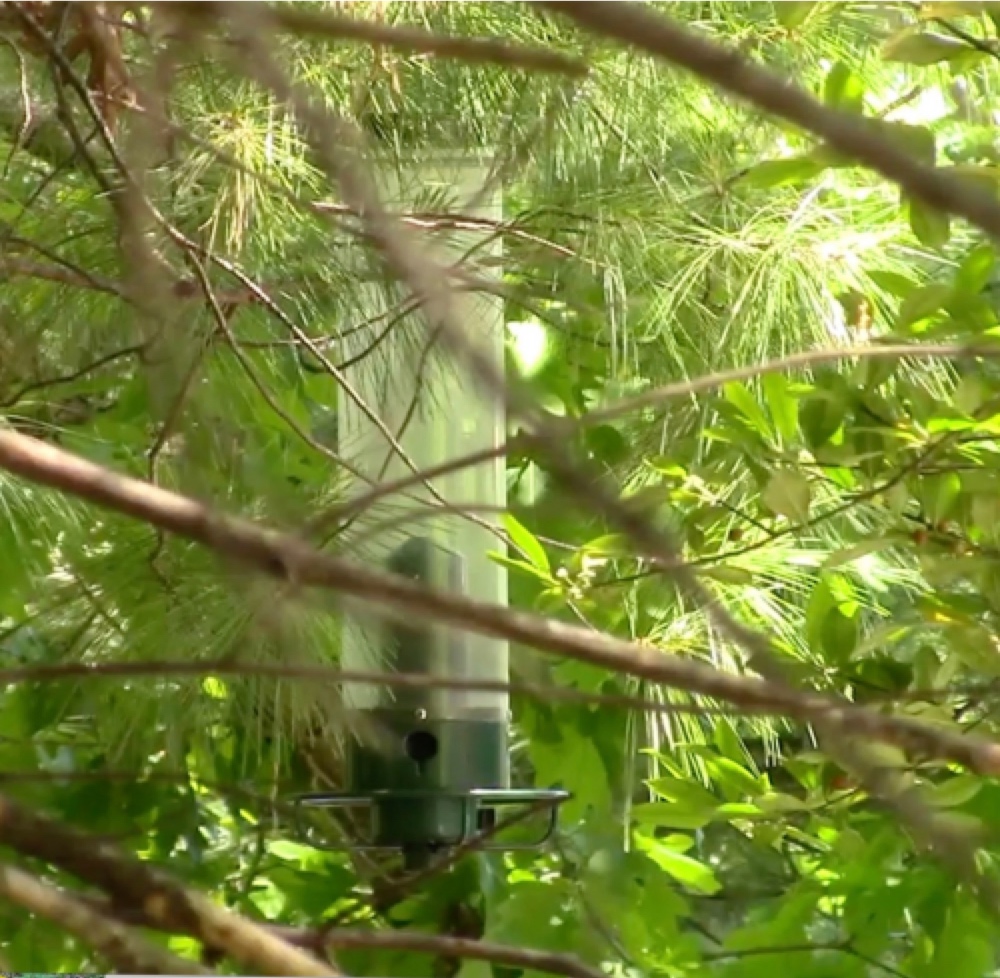
ABOVE (October 7, 2018): All specimens were given wire cages after 3 of the initial 10 planted in July 2008 succumbed to rodents eating the cambium during the first winter. The winter of 2015/16 brought 2 more deaths (and one lethal injury) by root-eating rodents. Connie Barlow then scouted for BIRDFEEDERS in the neighborhood, and found a seasonally used feeder (above right) hanging along the southwest forested edge of the garden — the home closest to the 3 specimens killed that first winter.
SITE-SPECIFIC LEARNINGS (as of 2018)
The Lake Junaluska locale offers insights for helping species recovery ...
1. ASSISTED MIGRATION - The plants seem to be disease-free at this latitude and elevation some 300 miles north of the historically native range in Florida.
2. ADAPTIVE GROWTH FORMS - If afforded the opportunity to grow in open sunlight, Torreya takes the form of a standard conifer (HAZEL DELCOURT and HENRY DAVID THOREAU). If the habitat is shaded subcanopy, its form is yew-like and growth is much slower (RACHEL CARSON and WILLIAM BARTRAM). Because Torreya genus is not a pioneer-sere taxon, only human intervention in cutting back overgrowth shade can maximize Torreya's growth potential and induce an upright form (and early seed production). As of 2018, no reproductive structures have been observed on even the tallest individuals (HAZEL DELCOURT and HENRY DAVID THOREAU).
3. ROOT-EATING RODENTS - Of the original 10 plantings in 2008, only 4 remain in 2018. All 6 deaths are attributable to tunneling, root-eating rodents. Because the same-age, same genetics Torreya planting at the Waynesville site has not been afflicted in the same way, the rodent problem must be site-specific. The forest garden (Corneille Bryan) is surrounded by pavement and homes, and there are two sources of boom-and-bust foods: (a) the Red and White Oaks have multi-year cycles of acorn masting, and (b) the house in the southwest corner of the garden forest has a birdfeeder overhanging its deck that drops seed only during this seasonally occupied summer community.
4. COMPETITIVE EXCLUSION BY RHODODENDRONS - Rhododendrons and Mountain Laurels are evergreen, subcanopy shrubs. Rhodies easily outpace Torreyas. (RACHEL and WILLIAM both have rhodies encroaching.)
5. REWILDING CONSTRAINTS - Unlike animals, plants cannot move to situate themselves in ideal circumstances — so we planters must attempt to find those macro sites (latitude, elevation, slope, aspect, forest type) and micro sites: rhododendron-free, deciduous canopy, extreme slopes. Until hundreds of seeds or seedlings are available for outplanting in each area, human interventions will remain necessary for ensuring speedy development of reproductive populations.
ACTIONS include: wire cages against surface rodents, removal of encroaching Rhododendrons, prompt removal of branch and treefalls. Autumn protection from antler rubbing will be important in deer habitat when a seedling reaches a height of 2 or 3 feet and until the prickly-leaf sapling loses its low branches. Both to deter deer and tunneling rodents, siting plants on extremely steep slopes is advised.
IDEALLY, in every "rewilding" site (distinct from full-sun, tended "orchard" sites), specimens should be numerous enough to have some managed for nearly full sunlight, some placed beneath a deciduous canopy but managed against branch-fall and rhodie intrusion, and others planted in various settings and left largely unmanaged — thus affording opportunities for learning more of Florida Torreya's natural history, preferences, and abilities to withstand and recover from setbacks. Visit the Propagate page for details.
CORNEILLE BRYAN NATIVE GARDEN PLANTINGS
MAIN PAGE OF TORREYA REWILDING PHOTOESSAY
RETURN TO HOME PAGE
|



















